Designed by Edward Durell Stone, the architect’s only building in Iowa, this New Formalist version of the Davenport Public Library replaced a neoclassical Carnegie Library built on this site in 1904. That one, designed by Calvin Kiessling of Shepley, Rutan, & Coolidge, was demolished in 1966, ostensibly after an addition caused structural damage to it…but that’s not entirely true - they were looking for an excuse.

Instead, the construction of a new children’s wing in 1962 damaged the library’s stacks, an addition tacked onto the original library in 1923. Regardless of the damage to the stacks building (notice the extra window bays?), the old library’s days were likely numbered - the children’s wing had been designed with a new library in mind, and the Davenport Library board considered the old Carnegie cramped, obsolete, and unbecoming of a city of Davenport’s ambition. As the Quad City Times put it in a 1962 editorial, why put more money “into such an old building already probably doomed to total destruction”? Davenport took a wrecking ball to the maybe-still-reparable-but-outmoded library and replaced it with a clean bright symbol of modernism (shoo, trads, this is fine - there’s more than enough boring civic neoclassicism around).
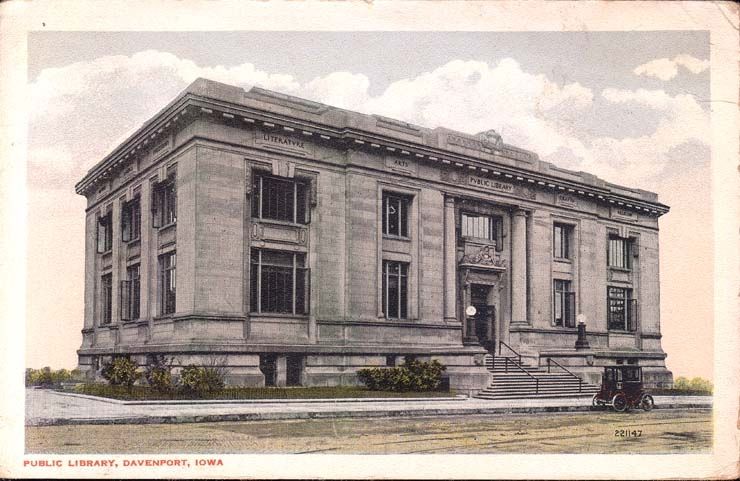
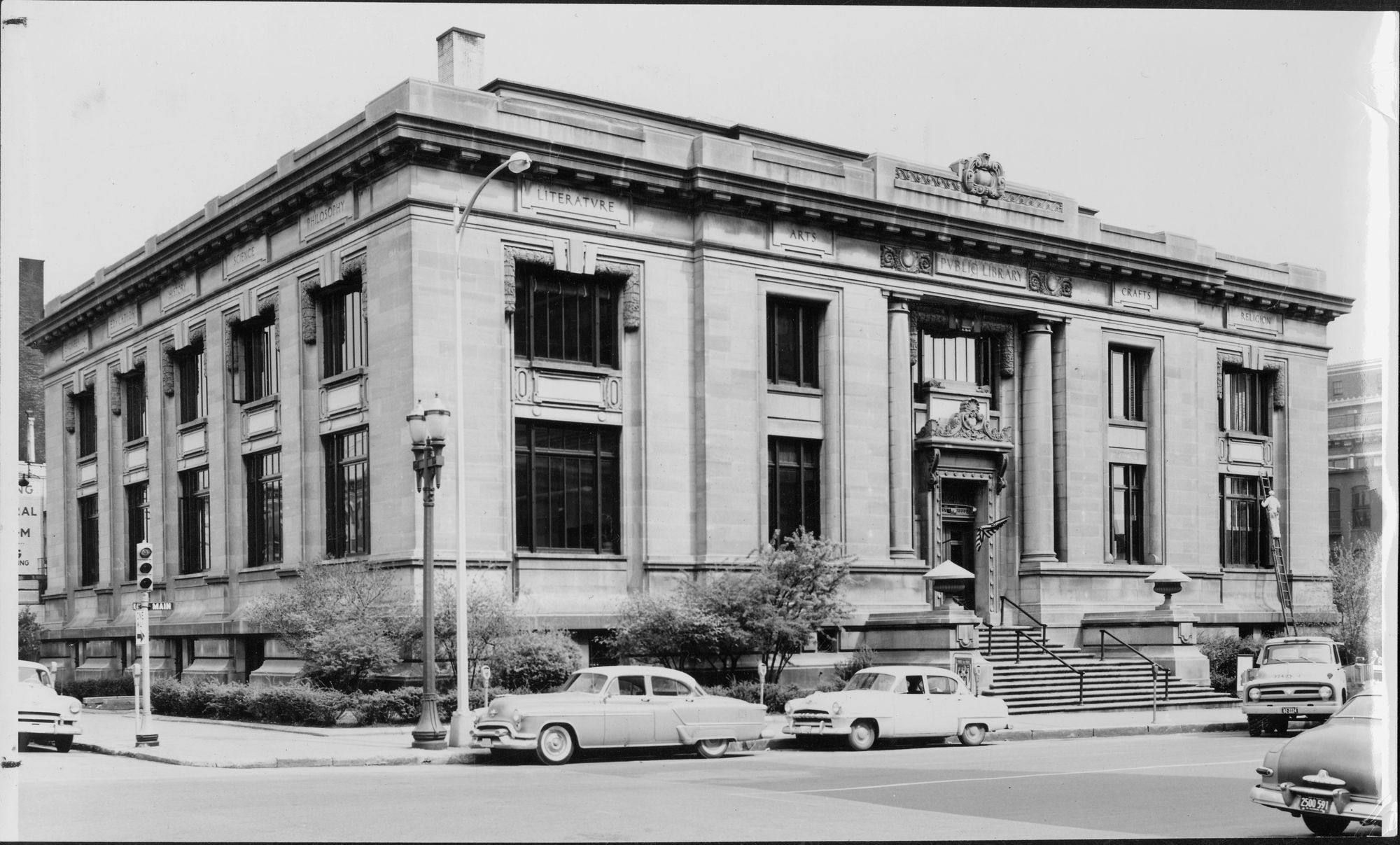

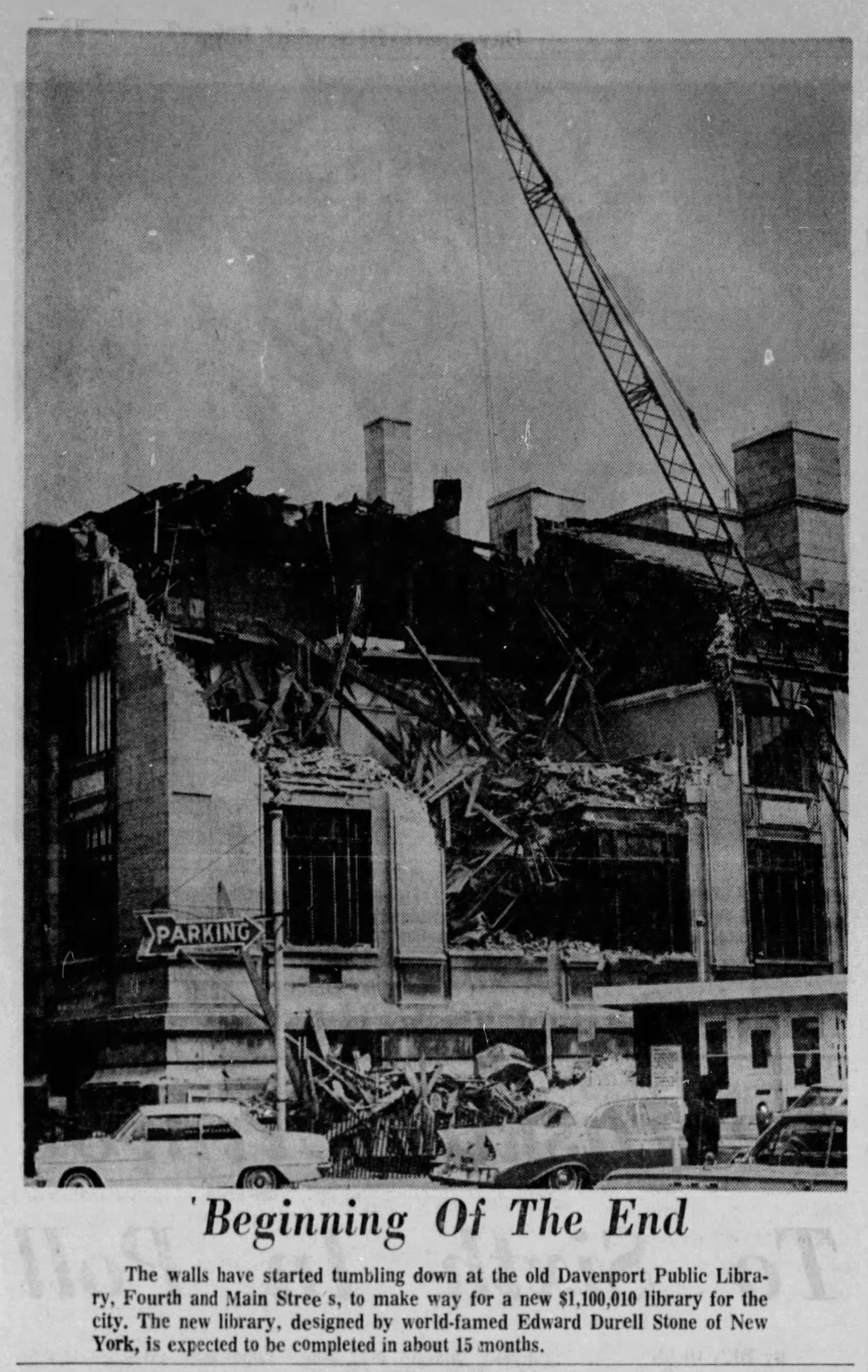
One of the key figures who helped Davenport snag $75k from Andrew Carnegie to build the original library was Alice French, a once-famous writer who's now almost completely forgotten. French, who wrote under the pen-name Octave Thanet, is an unusual but ultimately pretty uninteresting figure. Unusual, in that she was a turn-of-the-century writer who lived virtually openly as a lesbian with her partner Jane Crawford, but who also vigorously campaigned against women’s suffrage. Ultimately uninteresting, in that French, an heir to a wealthy industrialist family, hated labor, immigrants, minorities, and the poor (even by the standards of the time). For all her cross-cutting identities - a queer Iowan, a women writer, etc. - it was her position as a capitalist living off the income from her family’s investments that most influenced how she engaged with the world. As a politely savage PhD dissertation put it, French “was motivated to write by her desire to defend and preserve the established order”. …Yikes.
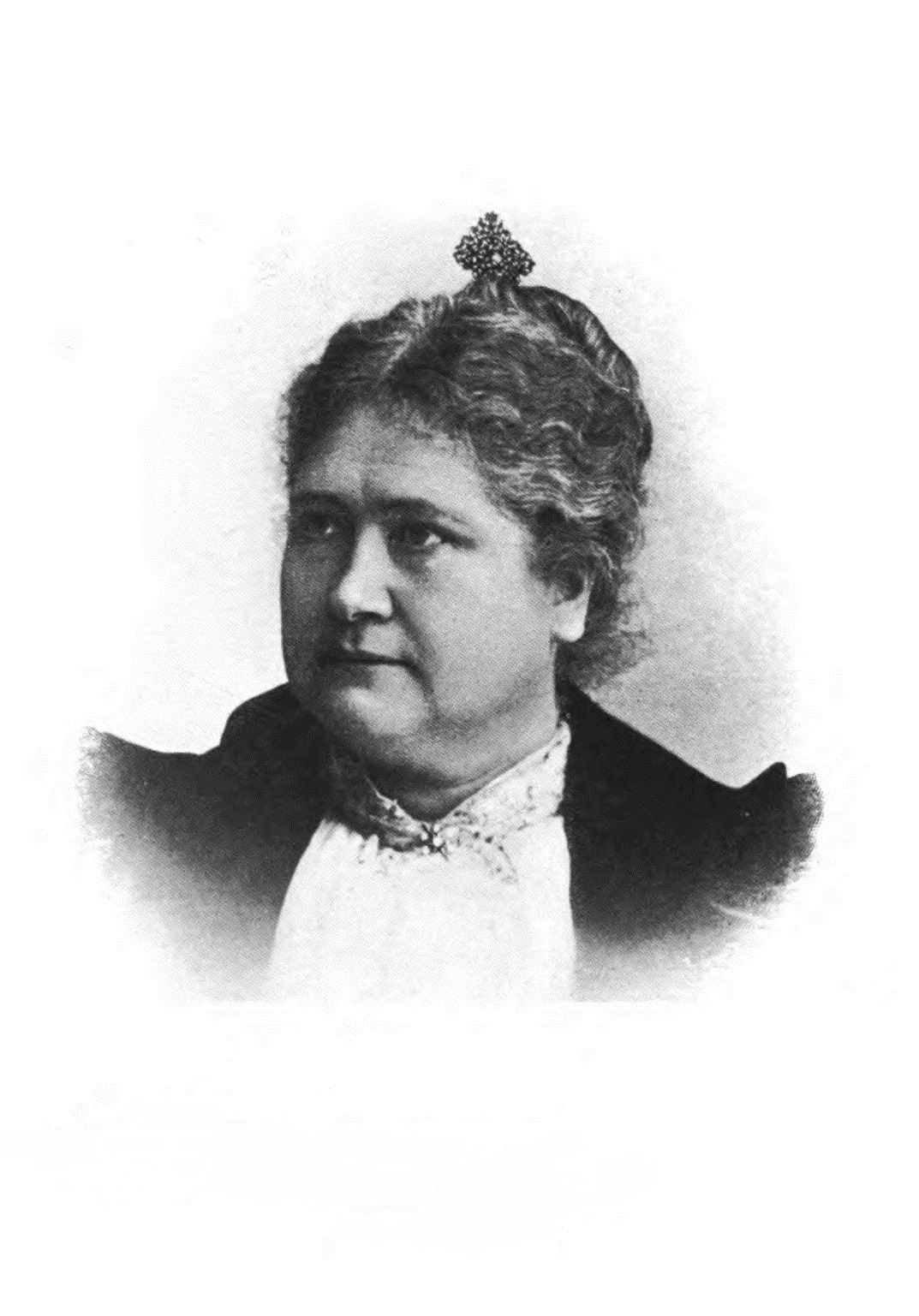
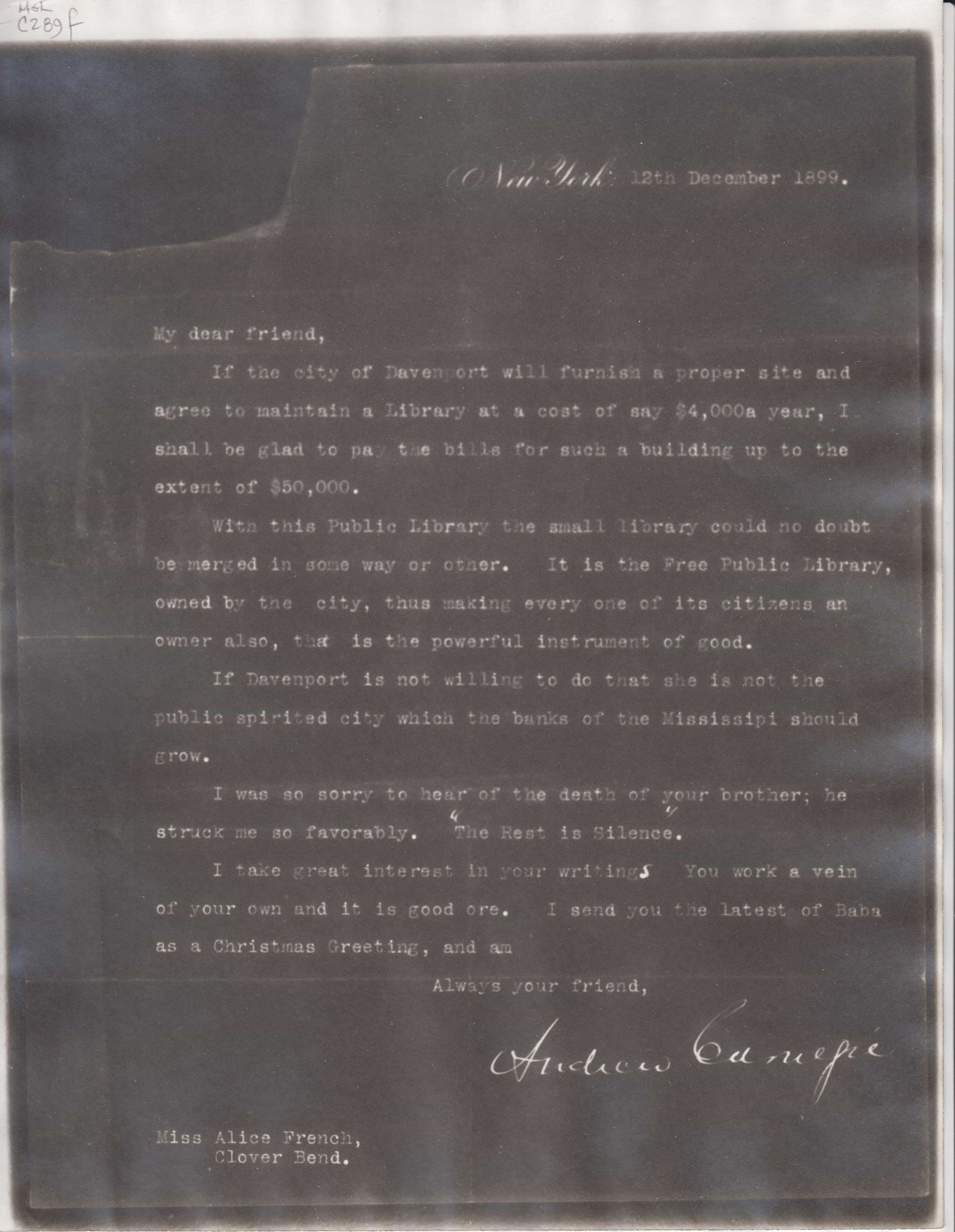
Regardless, it was this pioneering anti-suffragette lesbian who was friends with Andrew Carnegie and who sent the letter requesting the donation. Carnegie’s affection for her and Davenporters like Judge John Dillon and Miss Clara Holmes helped win the city an outsized donation.



The library board held a design competition in 1900, with 70-80 proposals submitted. Calvin Kiessling’s entry was originally the runner-up. The board selected Ralph Coolidge Henry’s plan as their first choice, but they eventually went with Kiessling’s plans for cost reasons (I think - they had already blown past their initial budget and asked Carnegie for more money).
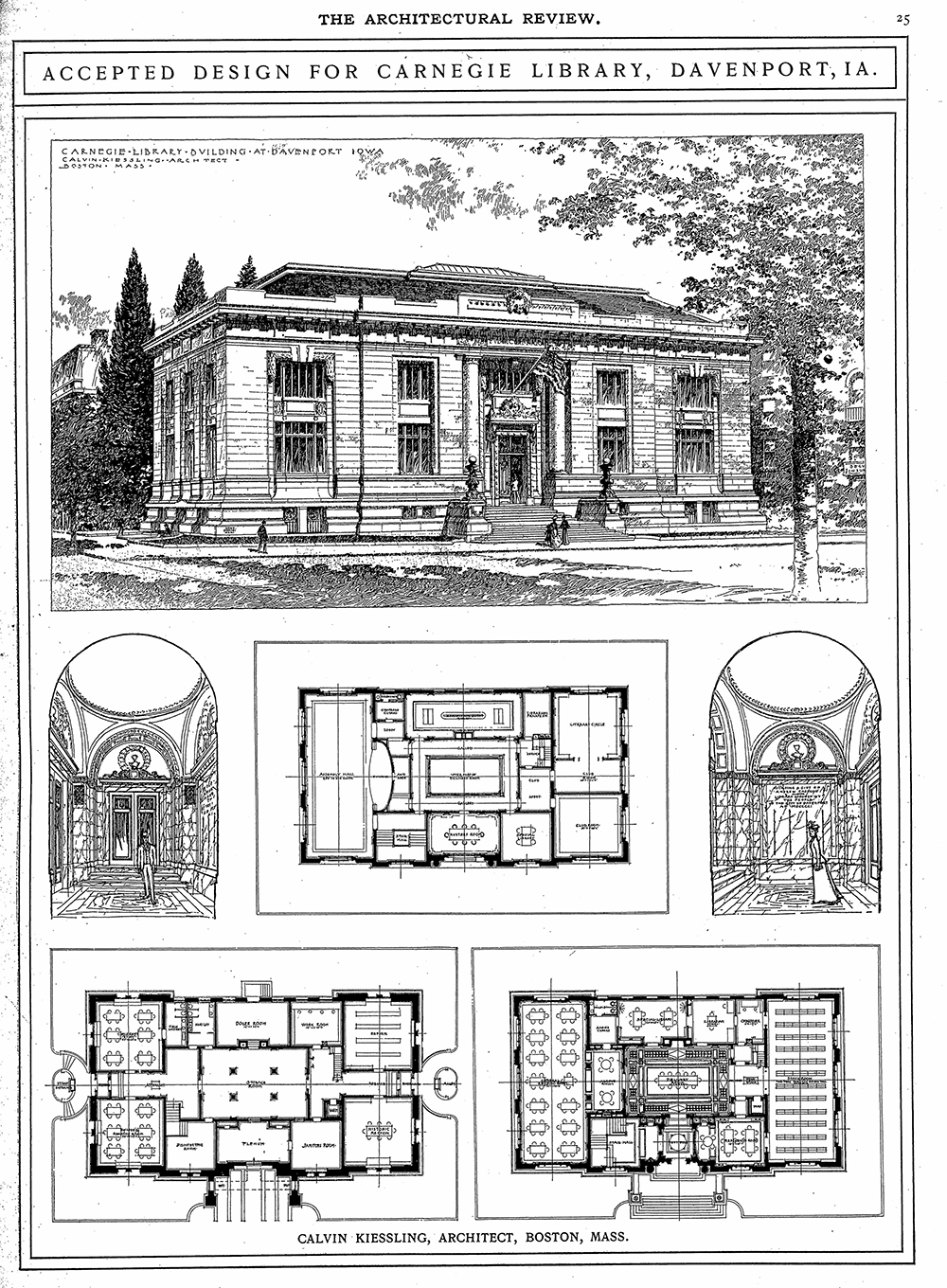

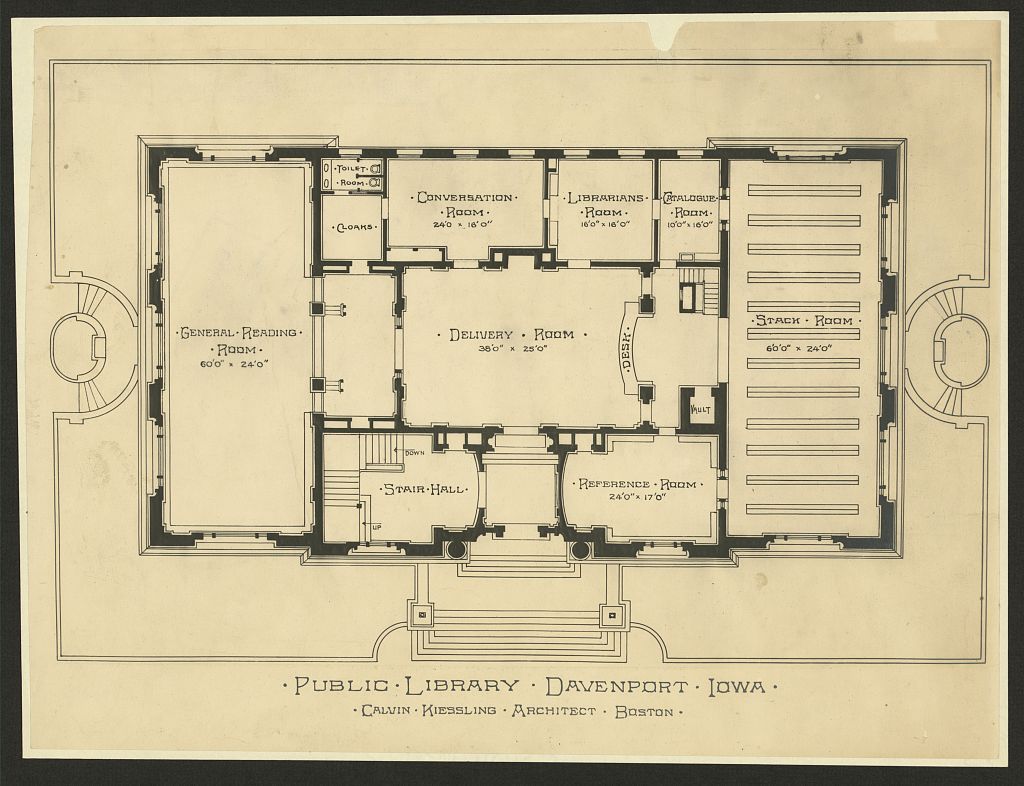
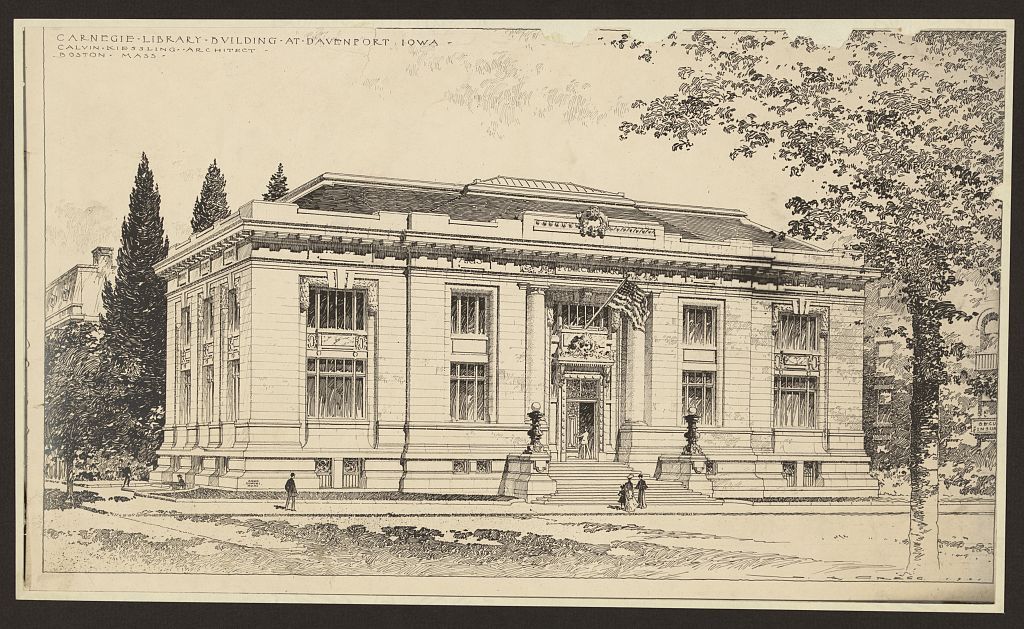
The Davenport Carnegie Library opened in 1904, and Kiessling parlayed this project into a handful of additional prominent Davenport commissions - a YMCA, a couple churches, etc. He also won another design competition for a Carnegie Library a few years later in Colorado Springs, which is still standing. Later in his career, in lucrative semi-retirement back on the east coast, Kiessling designed a bunch of colonial style residential mansions in Connecticut.

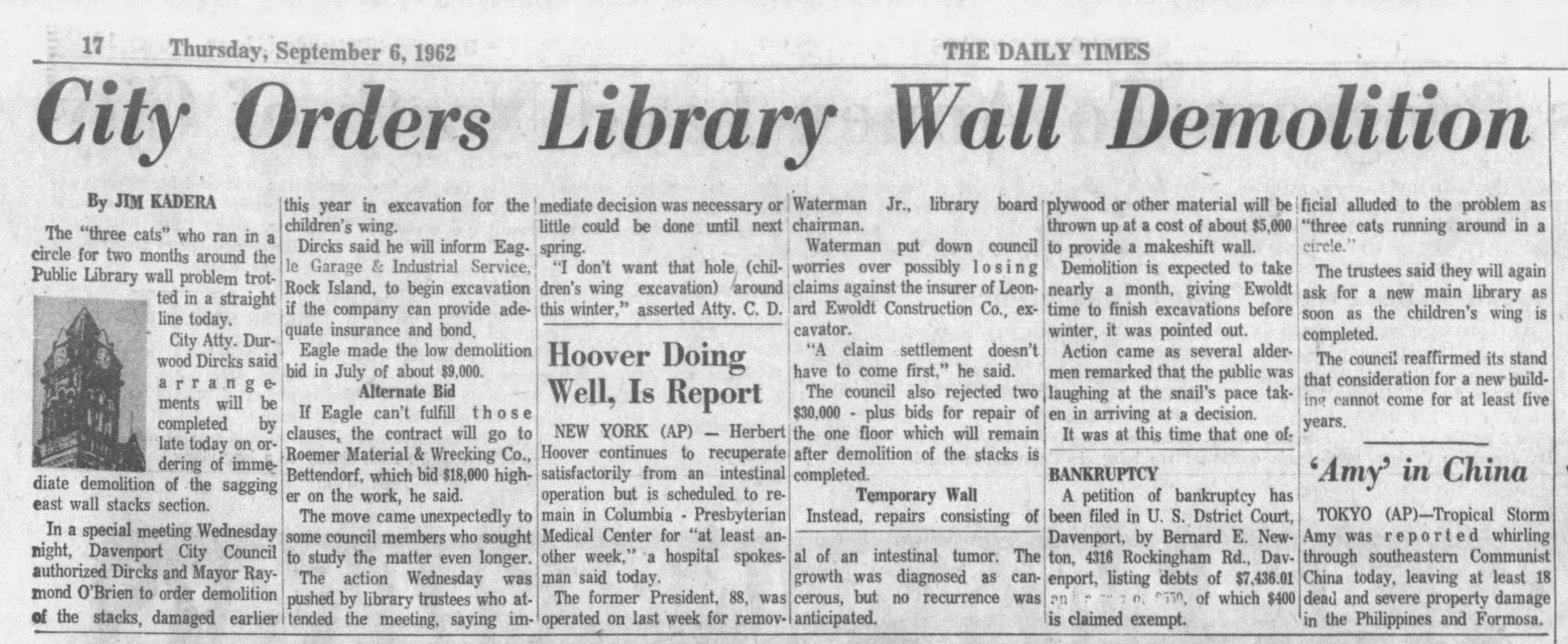

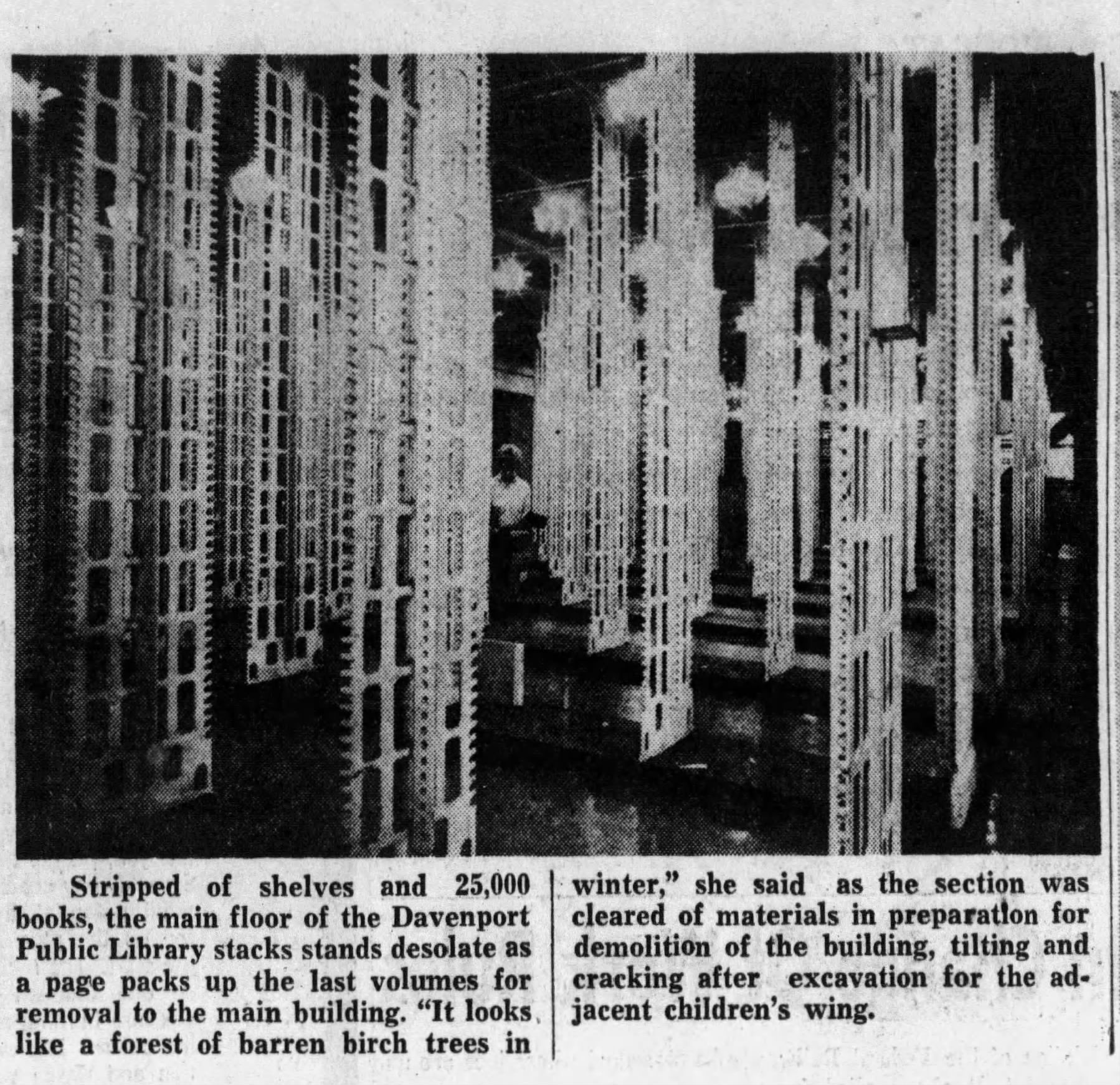
By the 1960s Davenport had more than doubled in population and the library was showing its age. The library board already planned to replace the old library when, during the building of a new children’s wing in 1962, construction damaged the foundation of the stacks building, a six-story masonry building added to the Carnegie library in the 1920s. Oops - the structurally damaged stacks building was quickly demolished, but the cracking walls created an opening for the library board to push for the replacement of the whole thing.

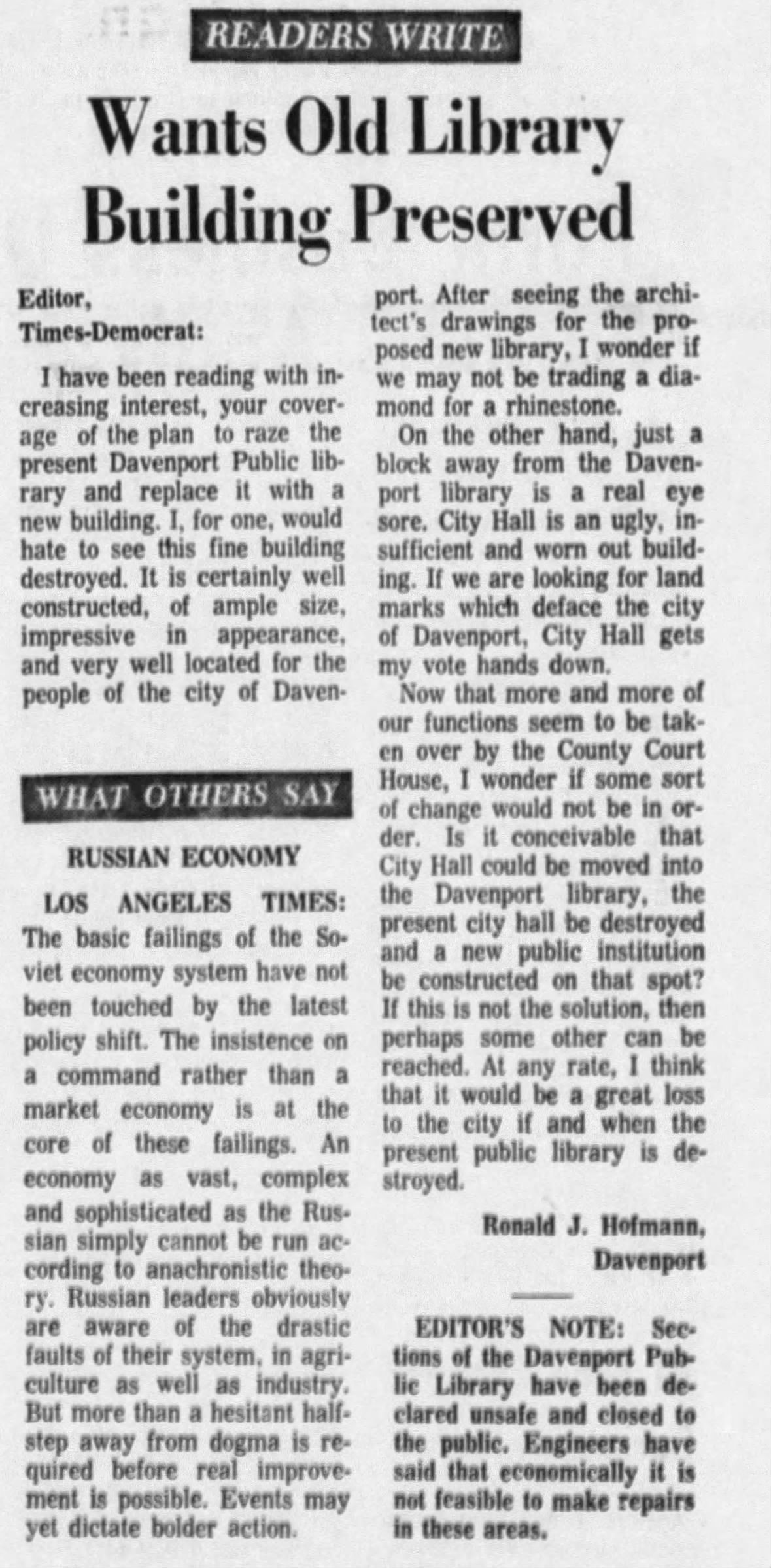
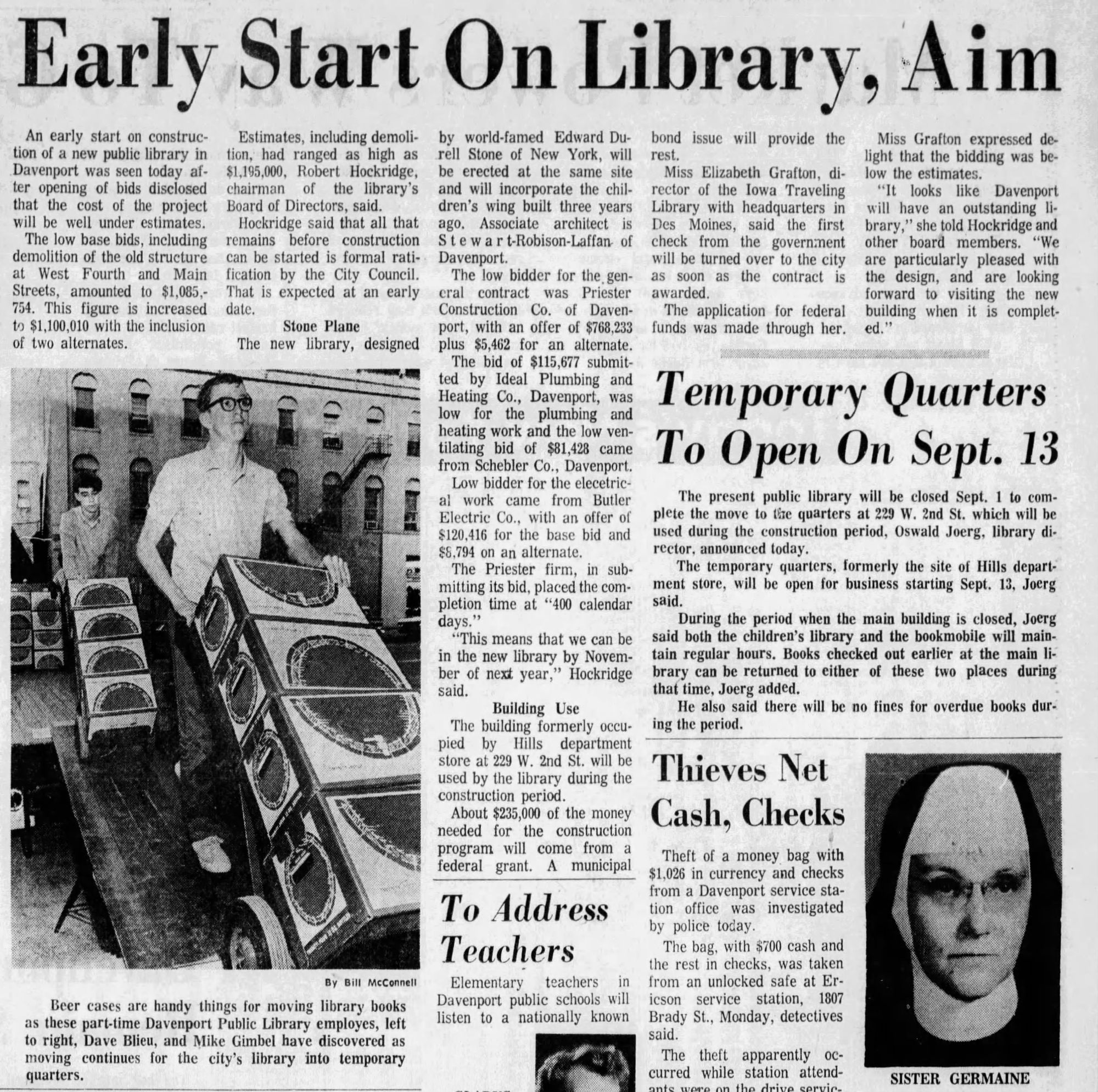

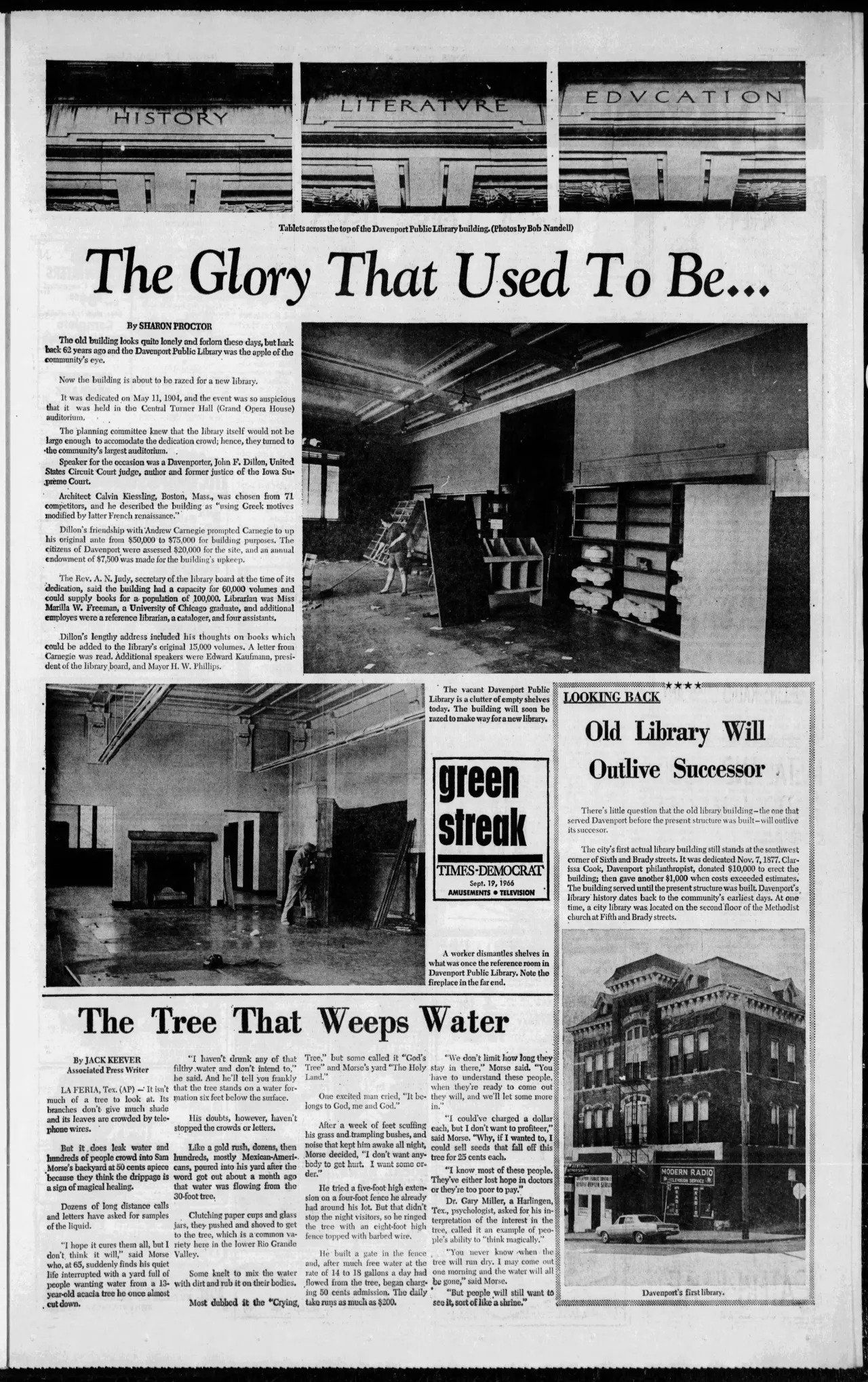
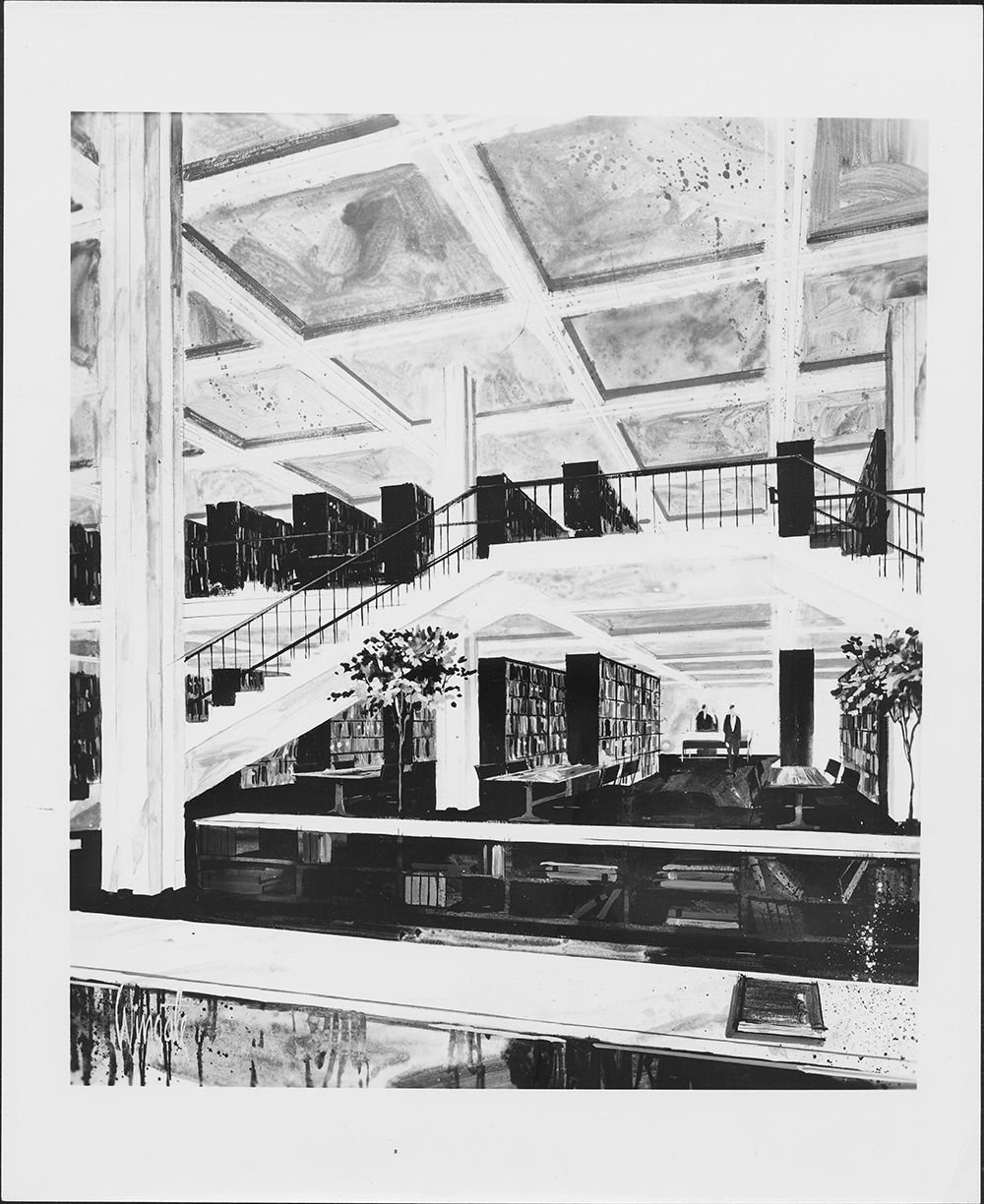
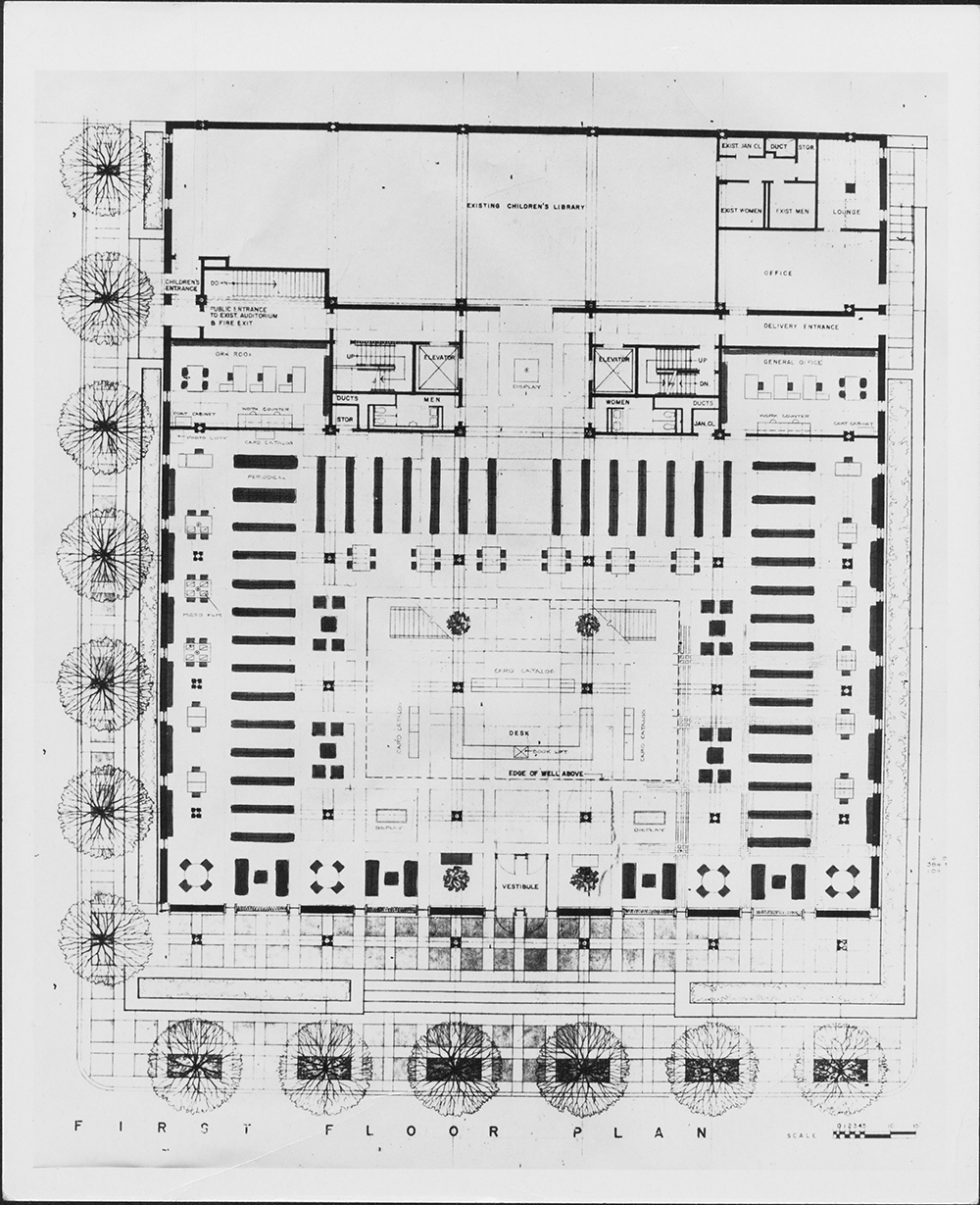
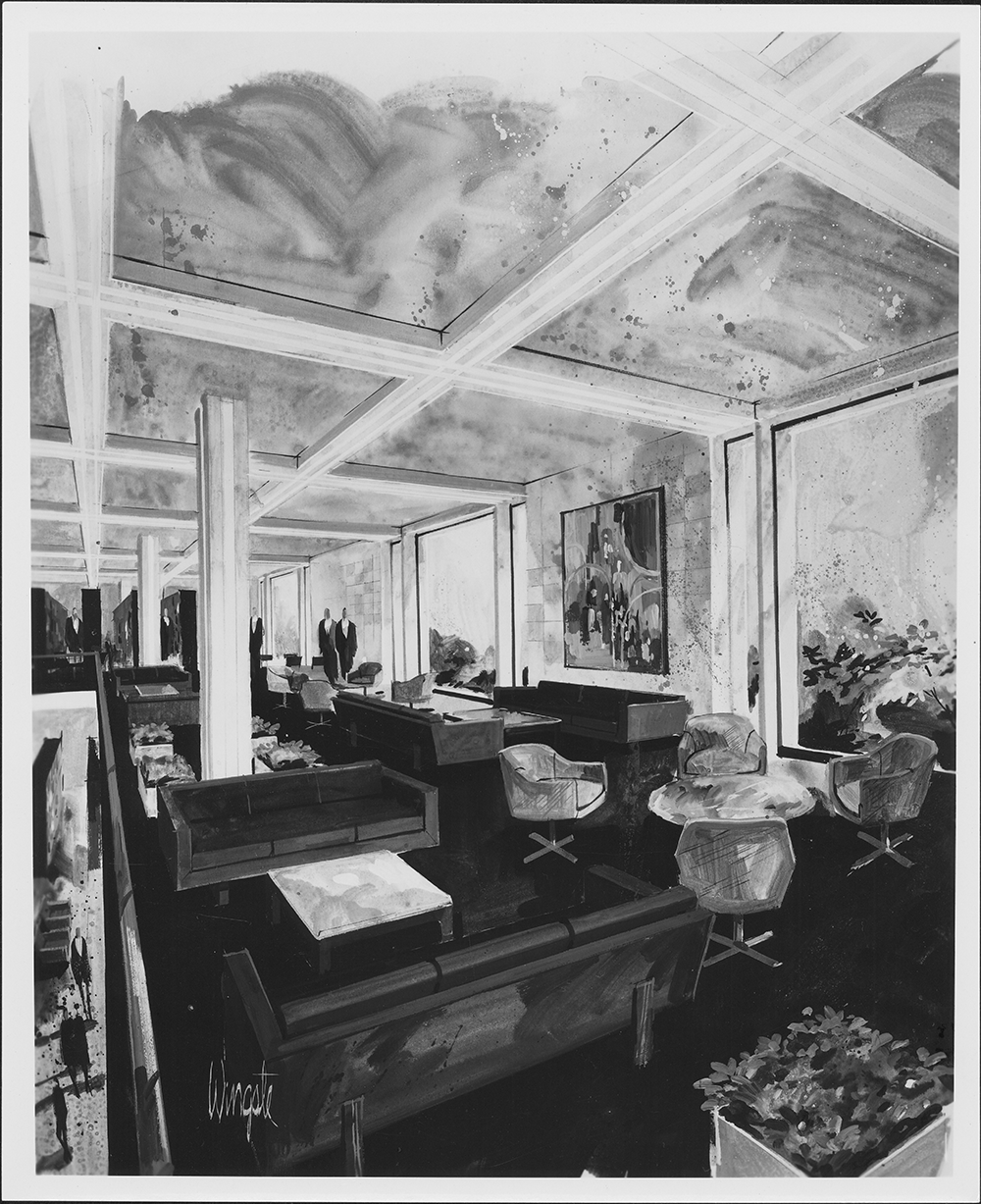
Various plans for restoration and reuse of the main library building were kicked around - which is why I think the prevailing narrative of “it was damaged and had to come down” is mostly bullshit - but by 1964 the library board had hired Edward Durell Stone to design the replacement, working with Davenport architects Stewart-Robinson-Laffan. Fresh off designing the Kennedy Center in Washington, D.C., securing the big-name east coast architect’s firm was considered quite the coup.
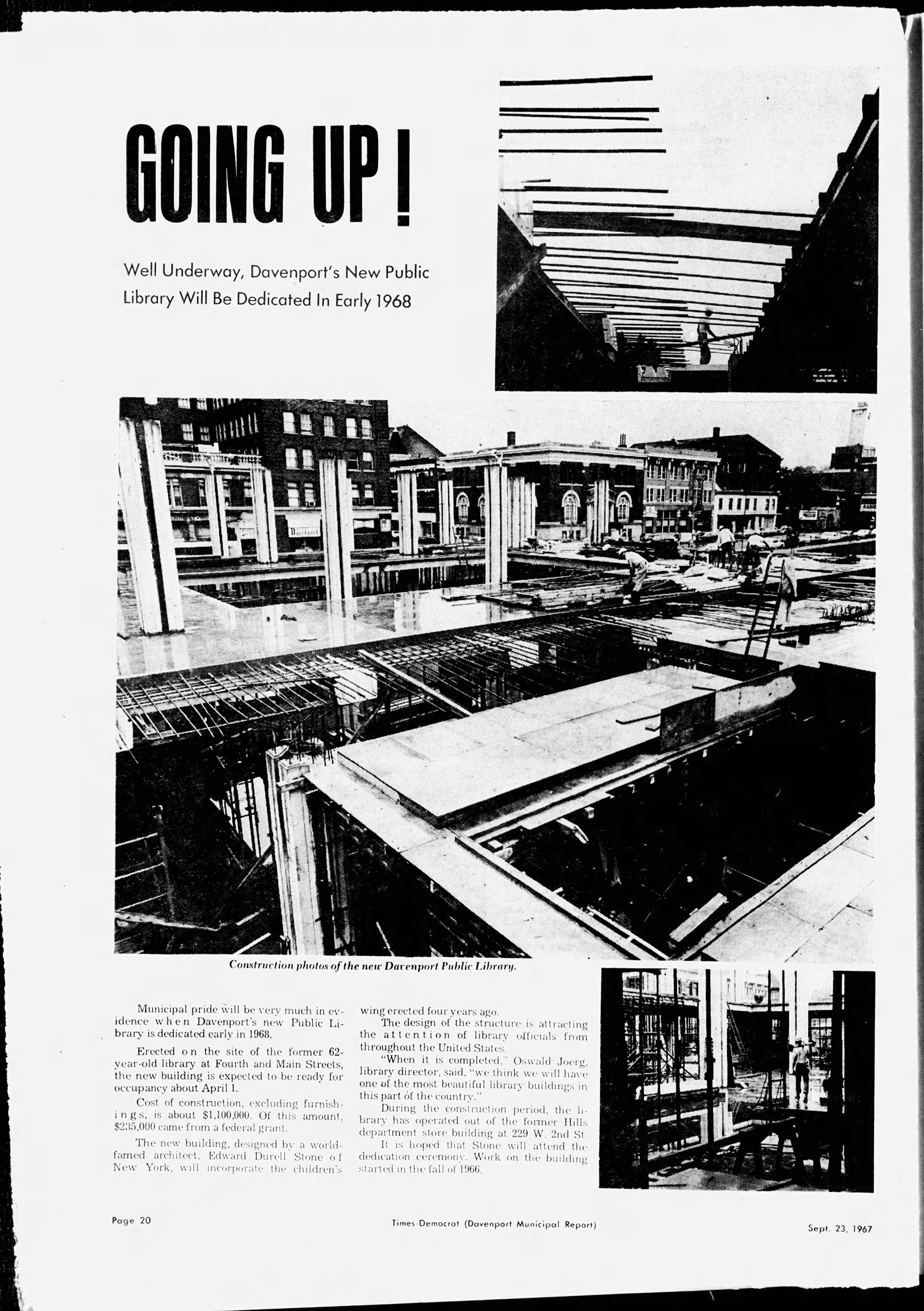
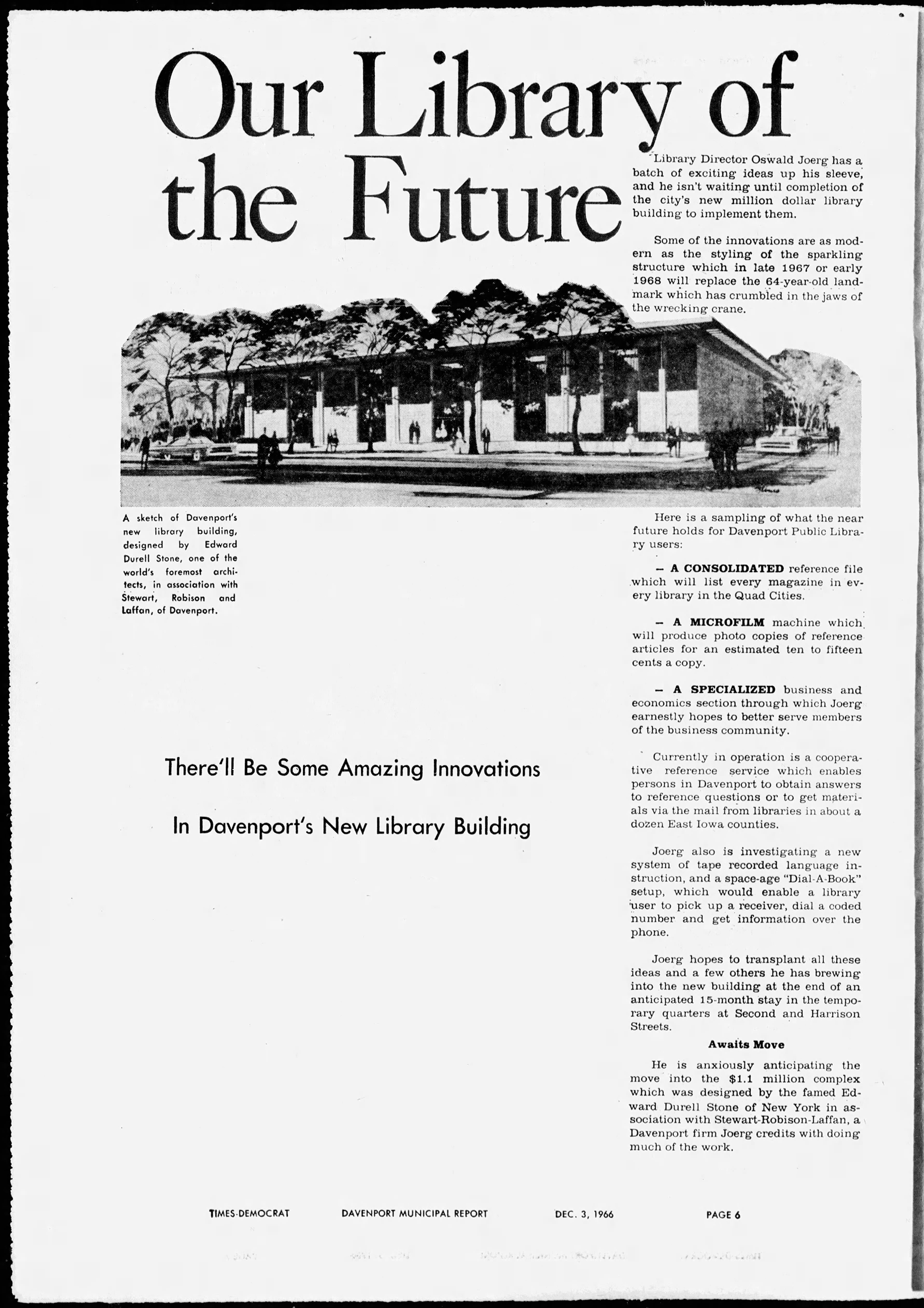
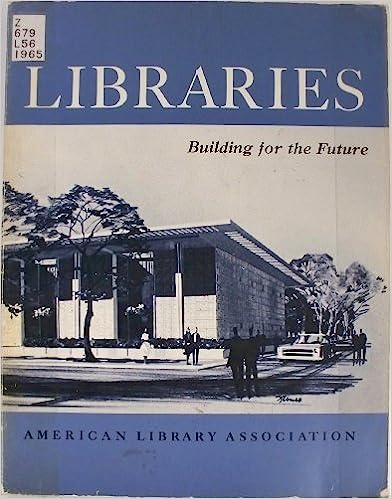
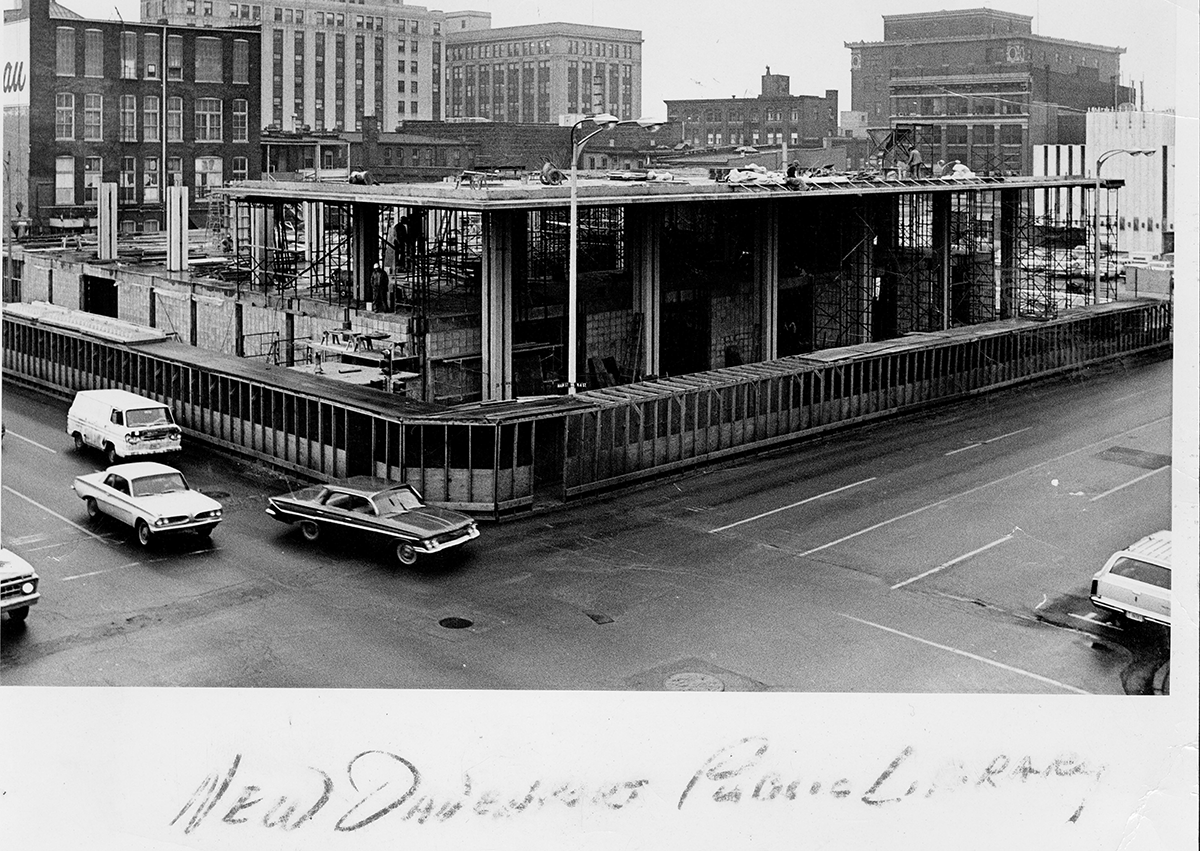
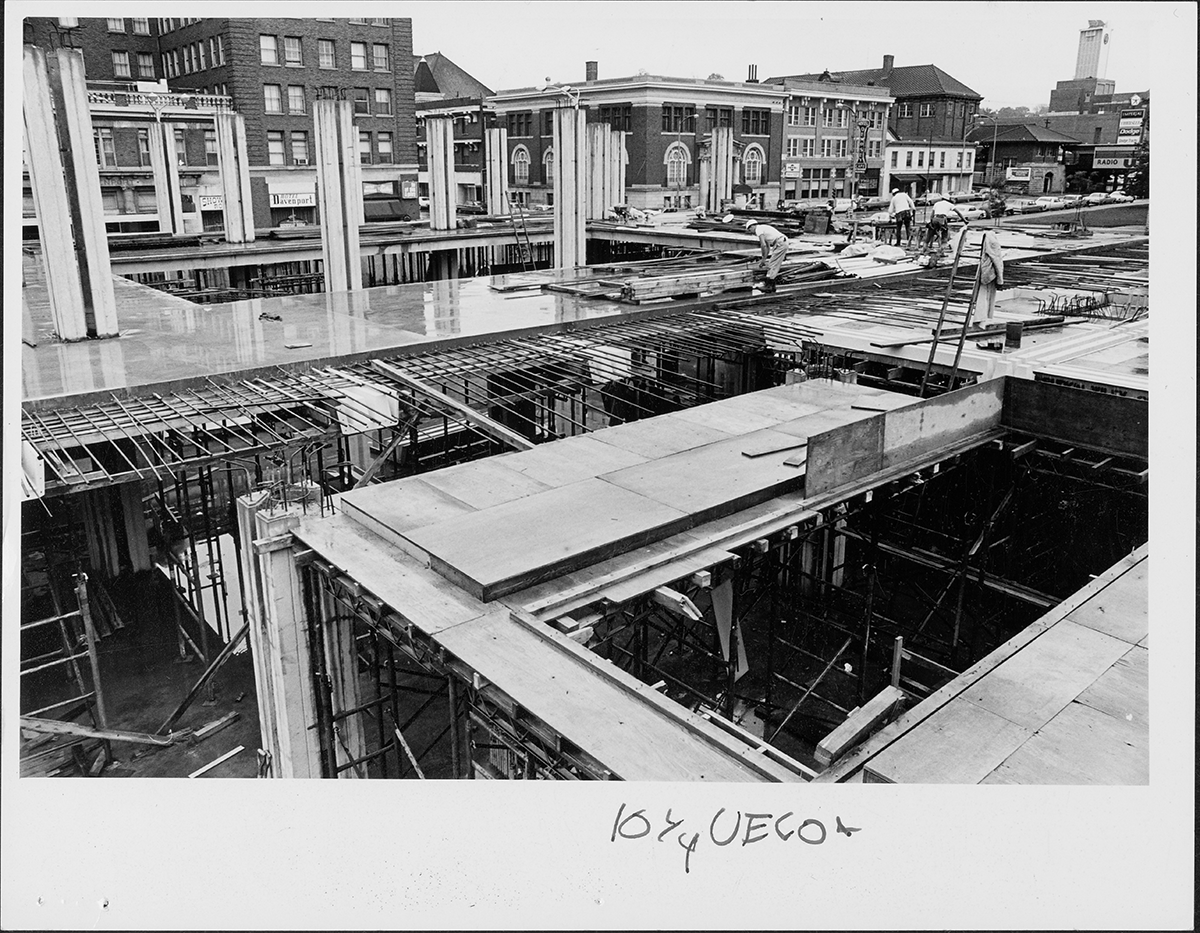

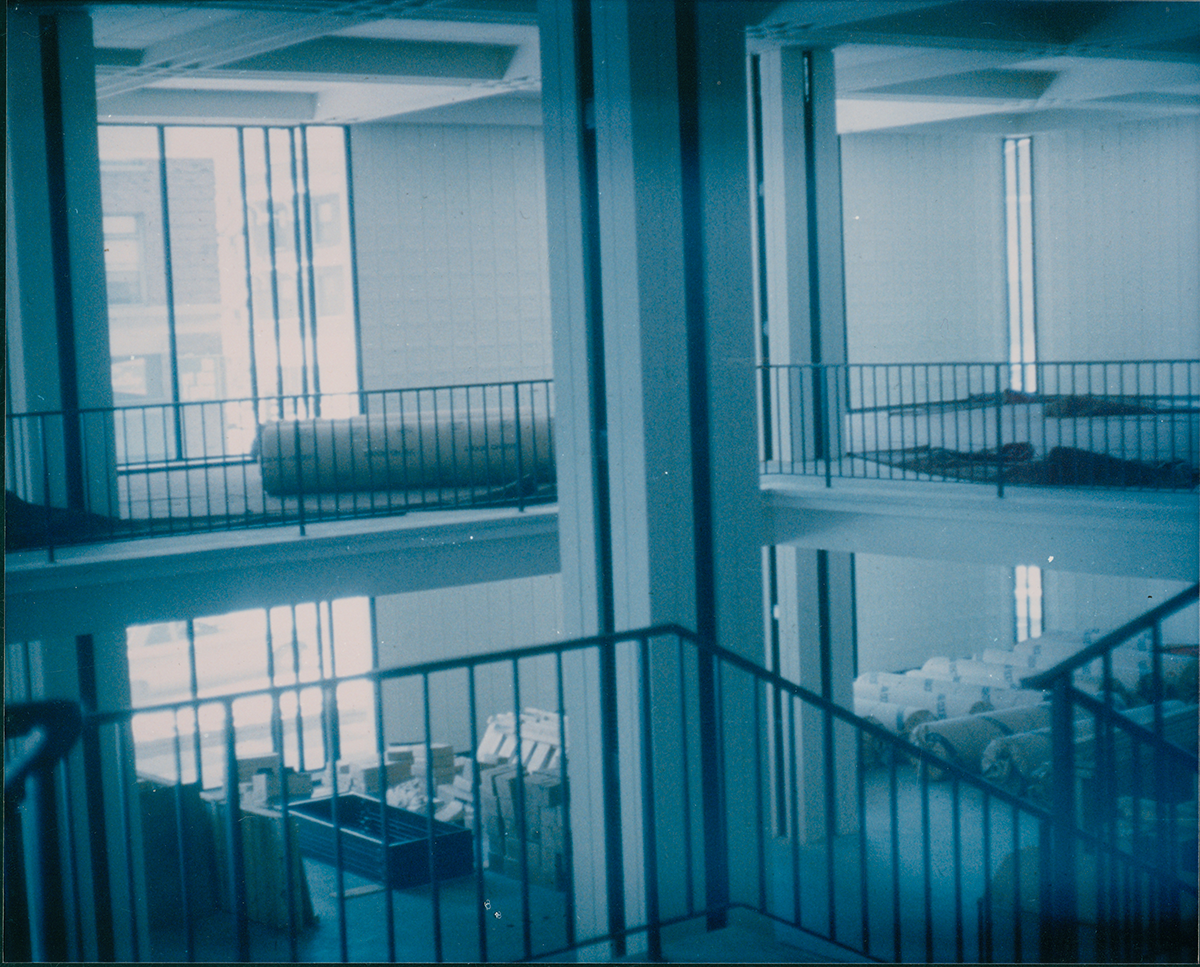
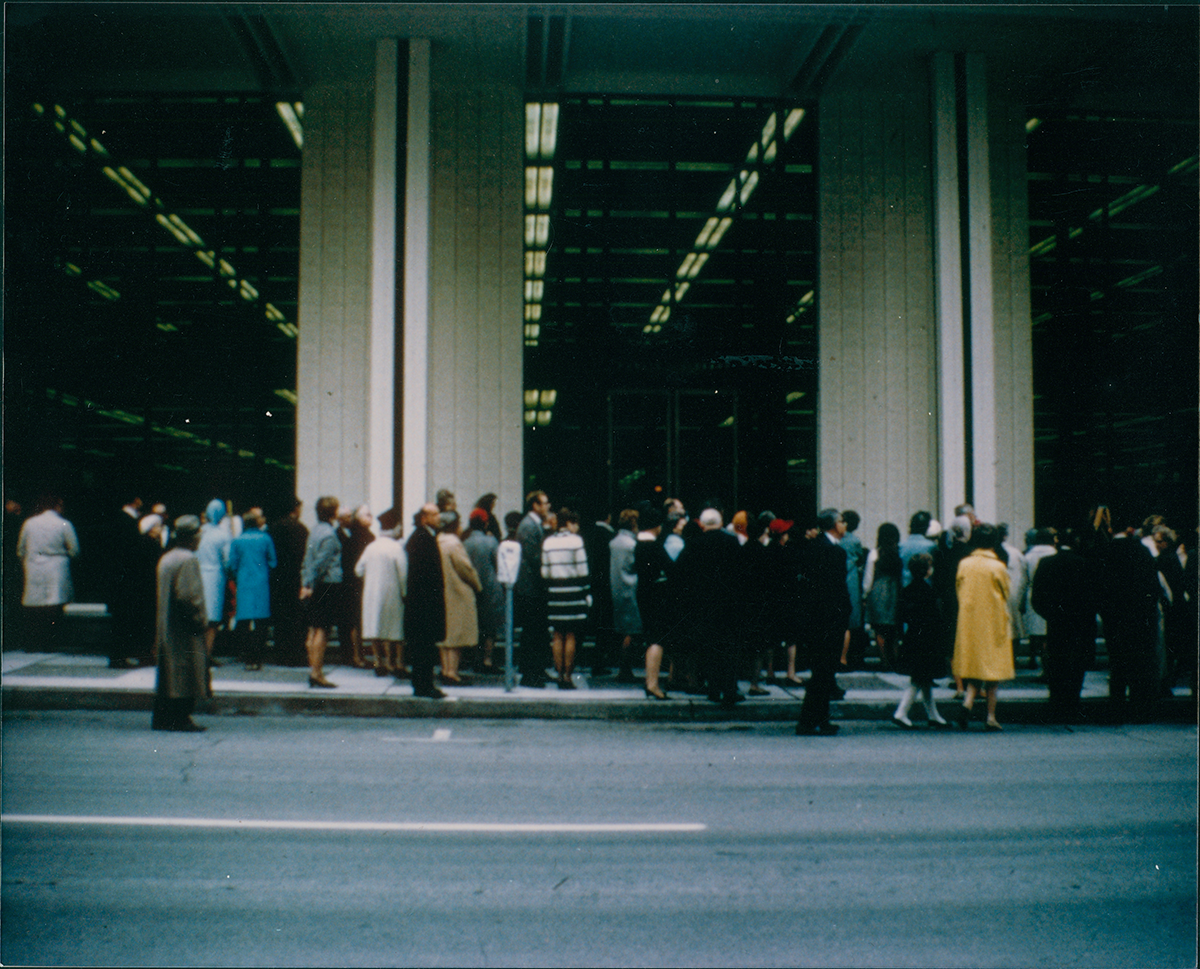
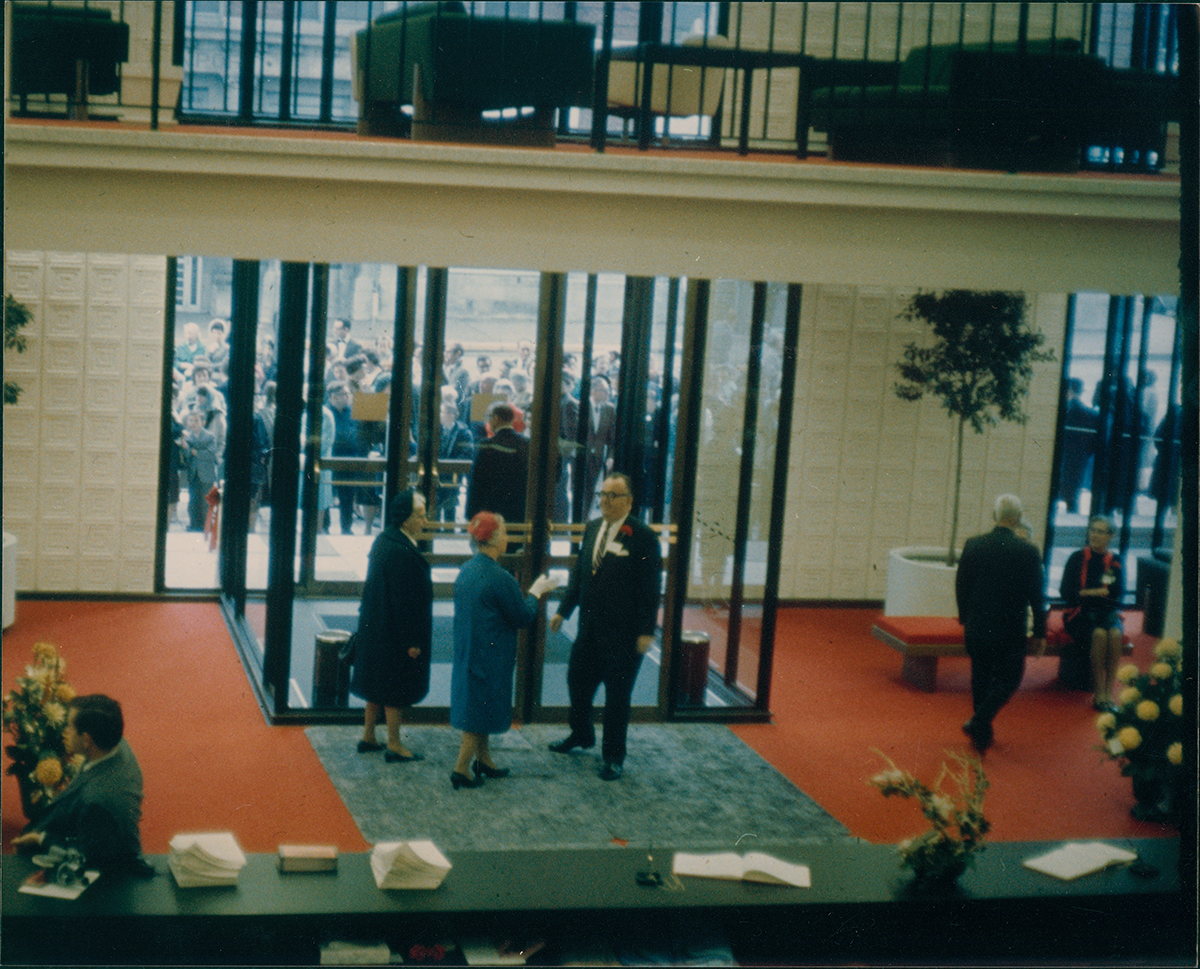
The old library was demolished in 1966, and Durell Stone himself attended the dedication of the new library in 1968. With a modern take on a classical portico and a facade of white precast concrete block evoking an ancient temple, it’s a fitting successor to the neoclassical Carnegie. Plus with an airy, bright interior, I gotta imagine it’s a nicer space to sit with a book. Still home to the excellent Davenport Public Library, the building was included as a contributing property in the Davenport Downtown Commercial Historic District, listed on the National Register of Historic Places in 2020 - more modernism on the NRHP, please.
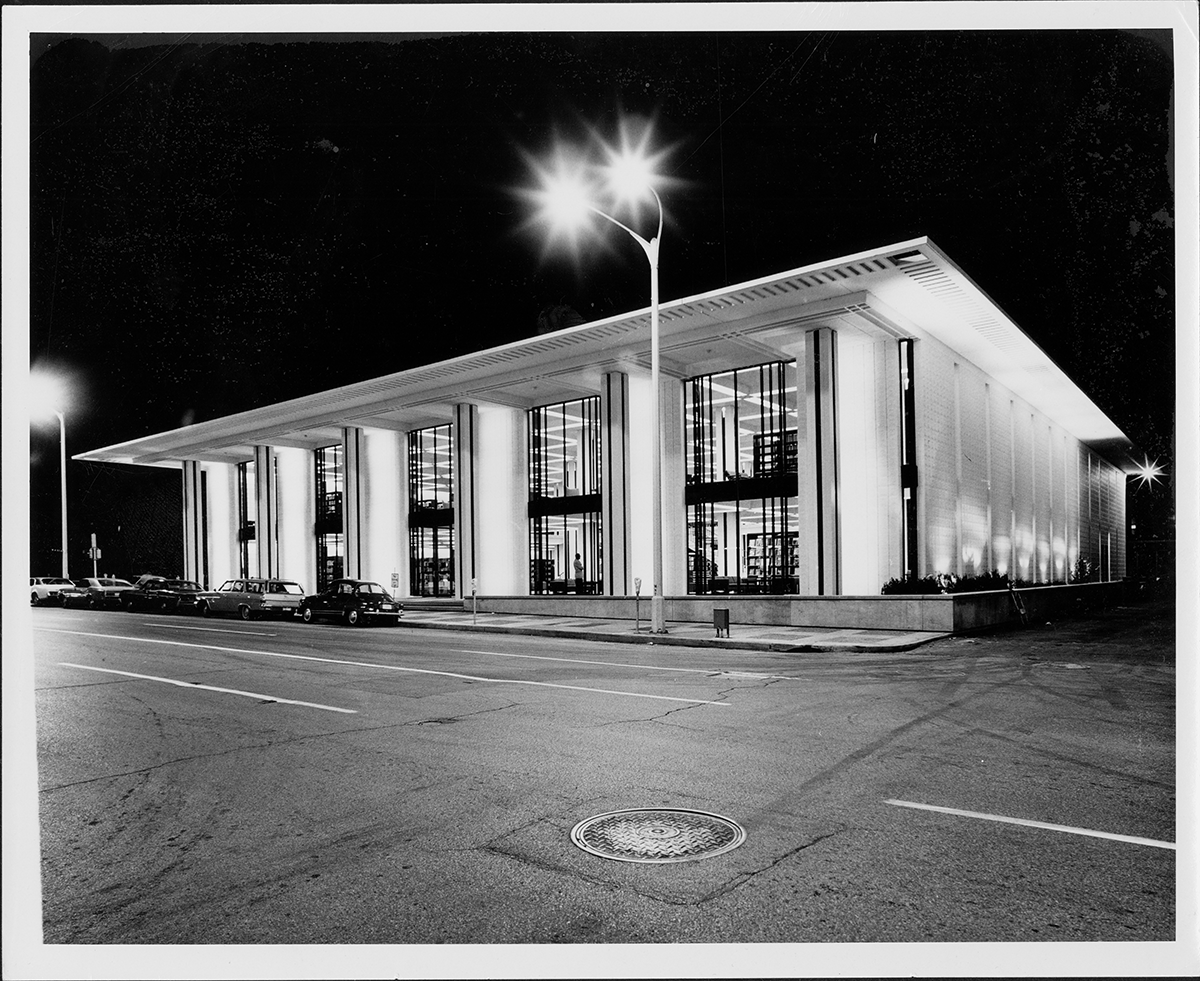
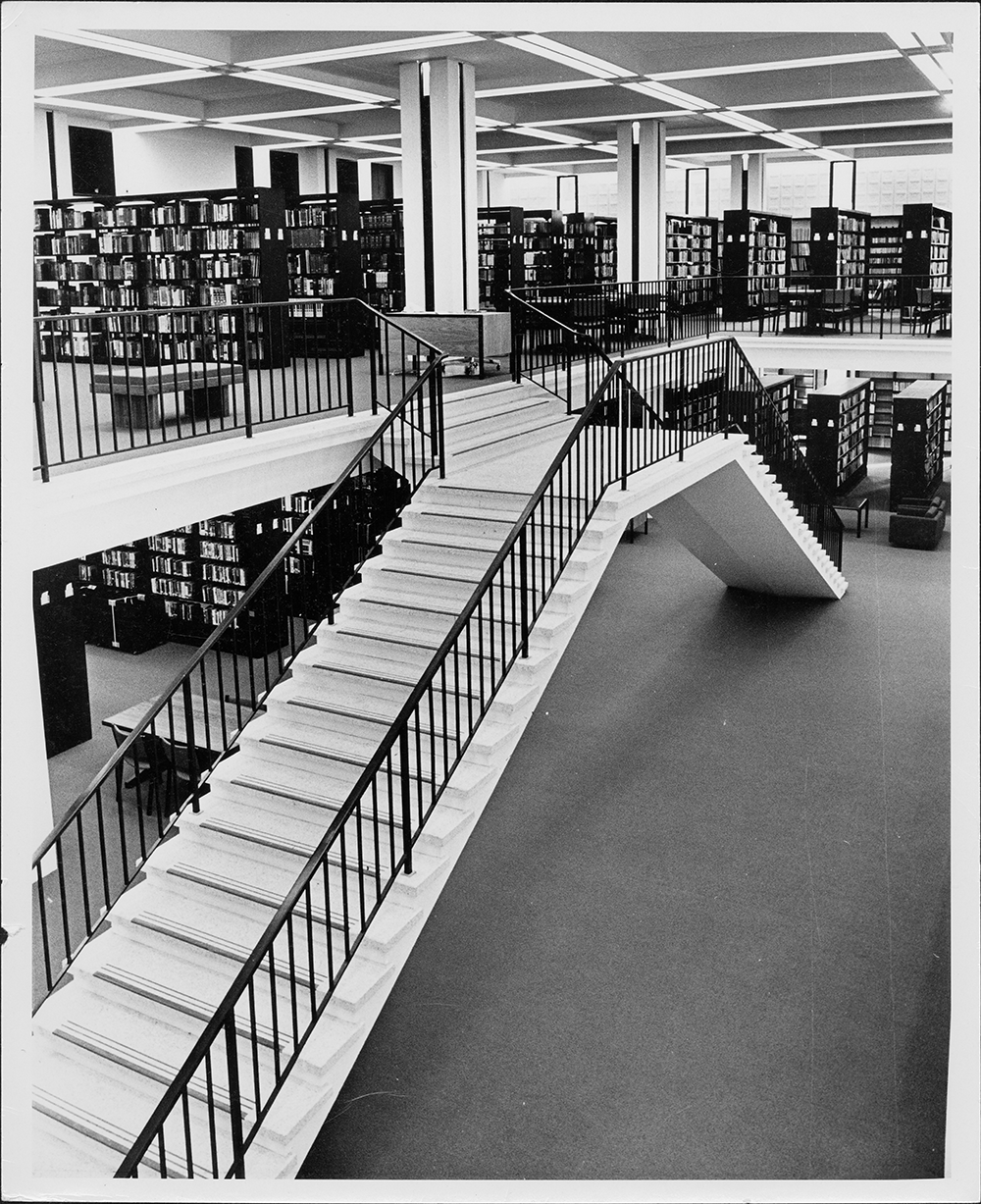
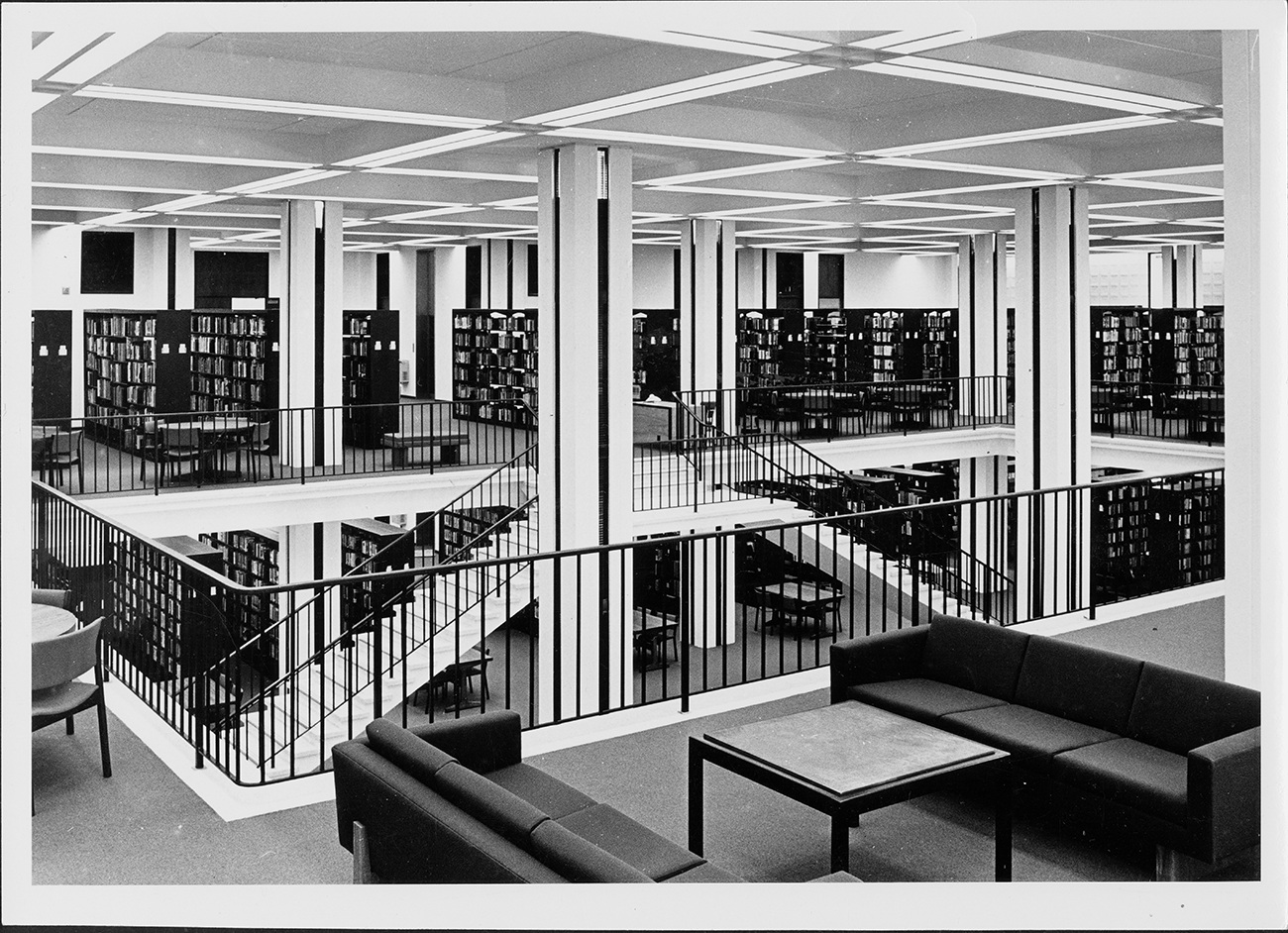
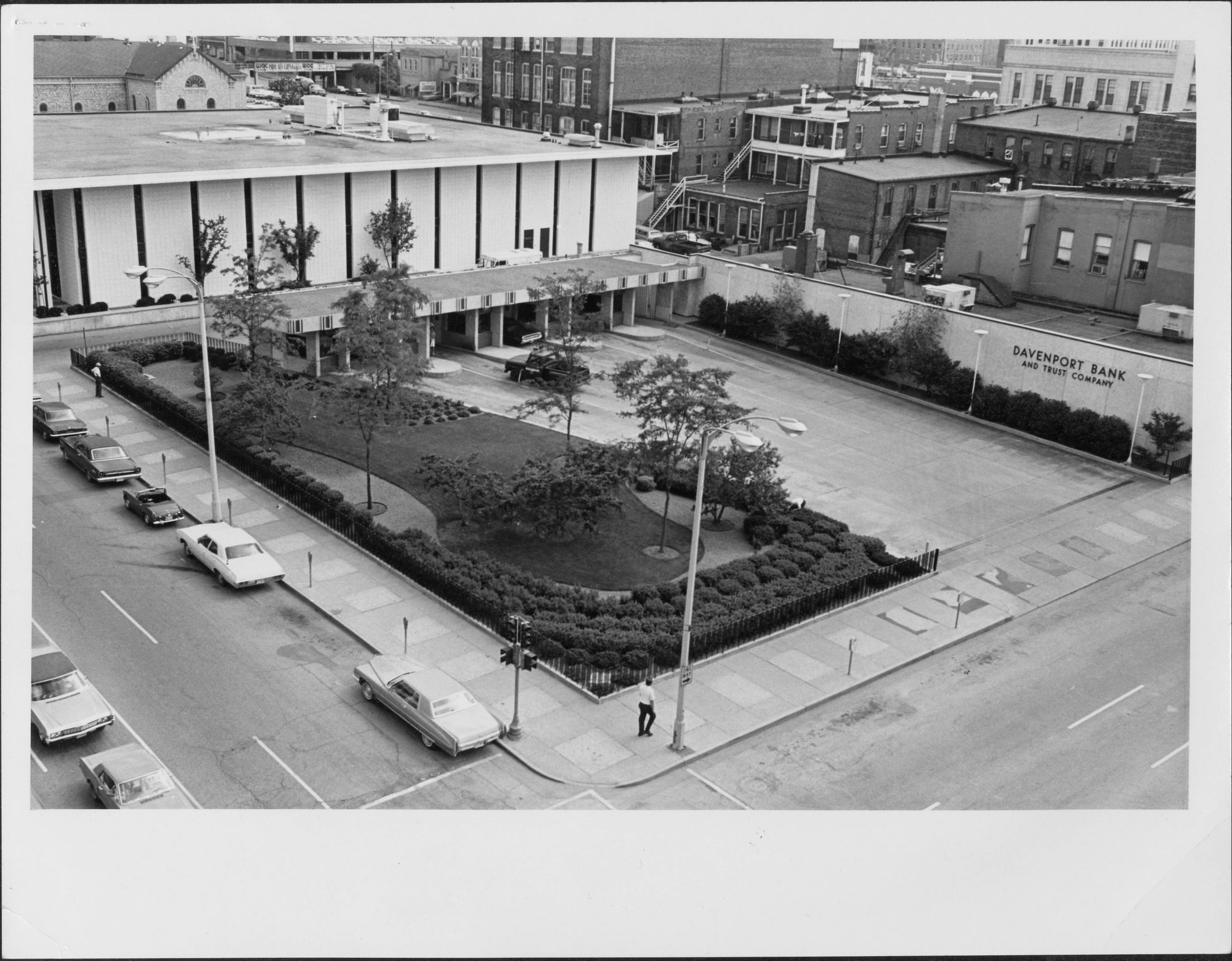
Production Files
Further reading:
- In the Downtown Davenport Commercial Historic District NRHP nomination
- In the awesomely comprehensive Carnegie Libraries of Iowa project
- Davenport Public Library blog about the construction of the children's wing
- Davenport Public Library blog about the demolition of the old library
- Neat read about what we can learn from library floor plans that features the old Davenport library building as an example
- Keeping Queer Company in the Short Fiction of Alice French

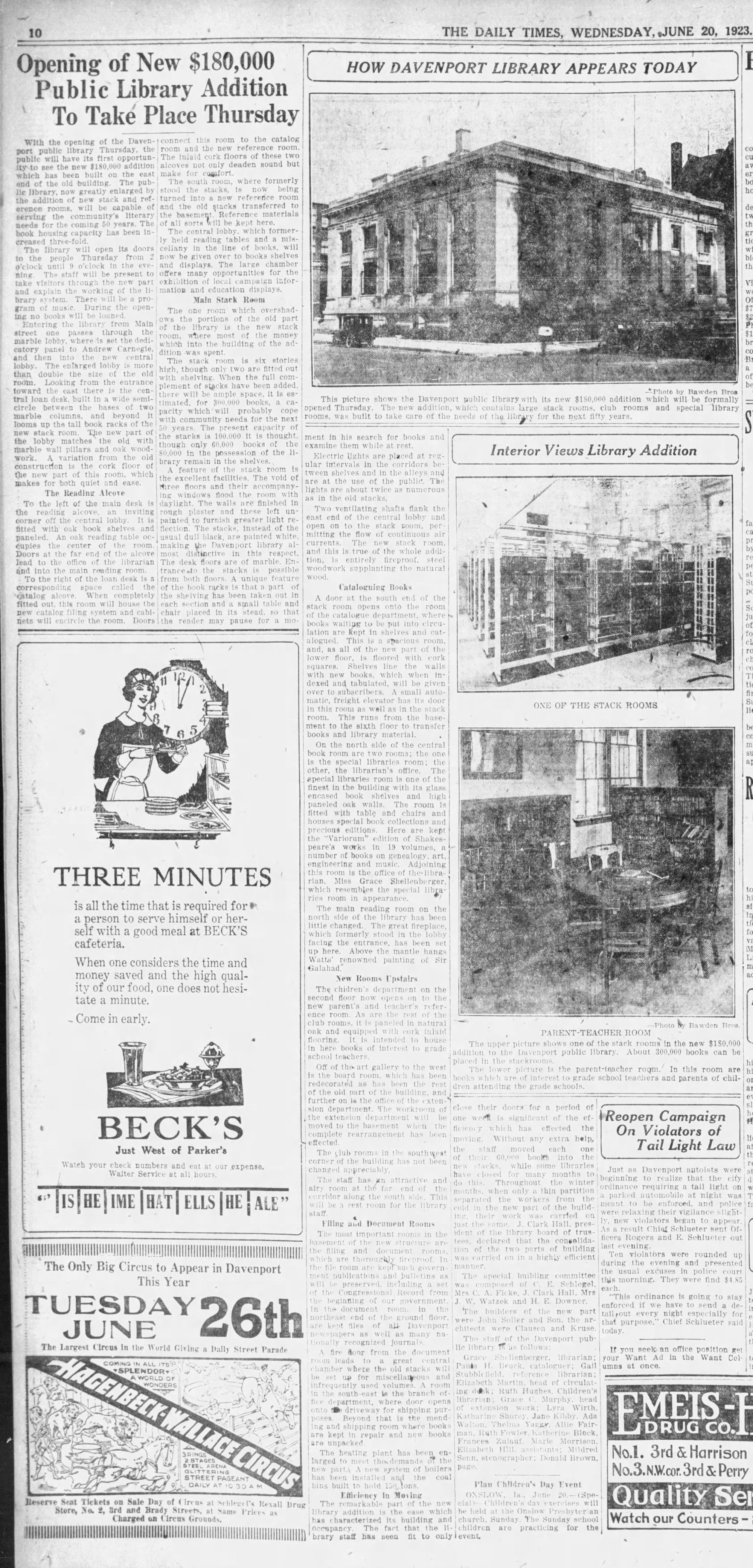
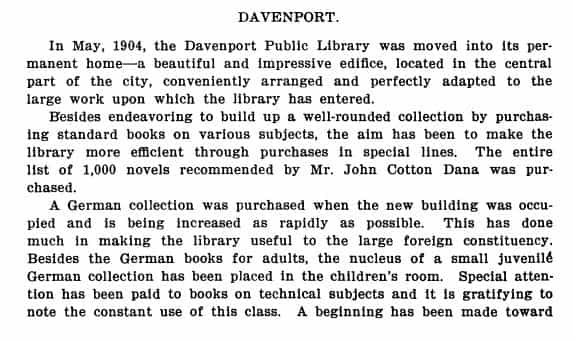



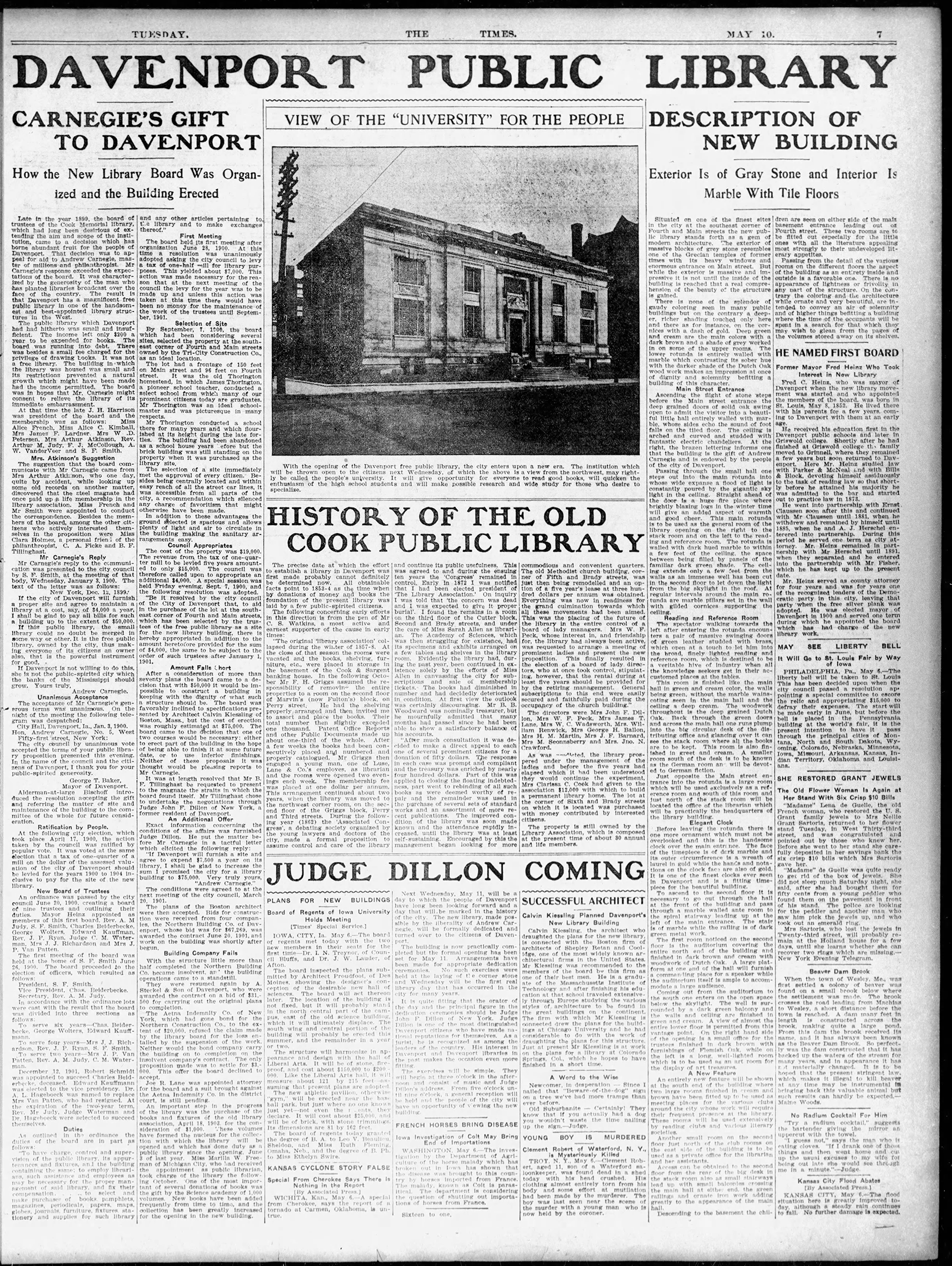
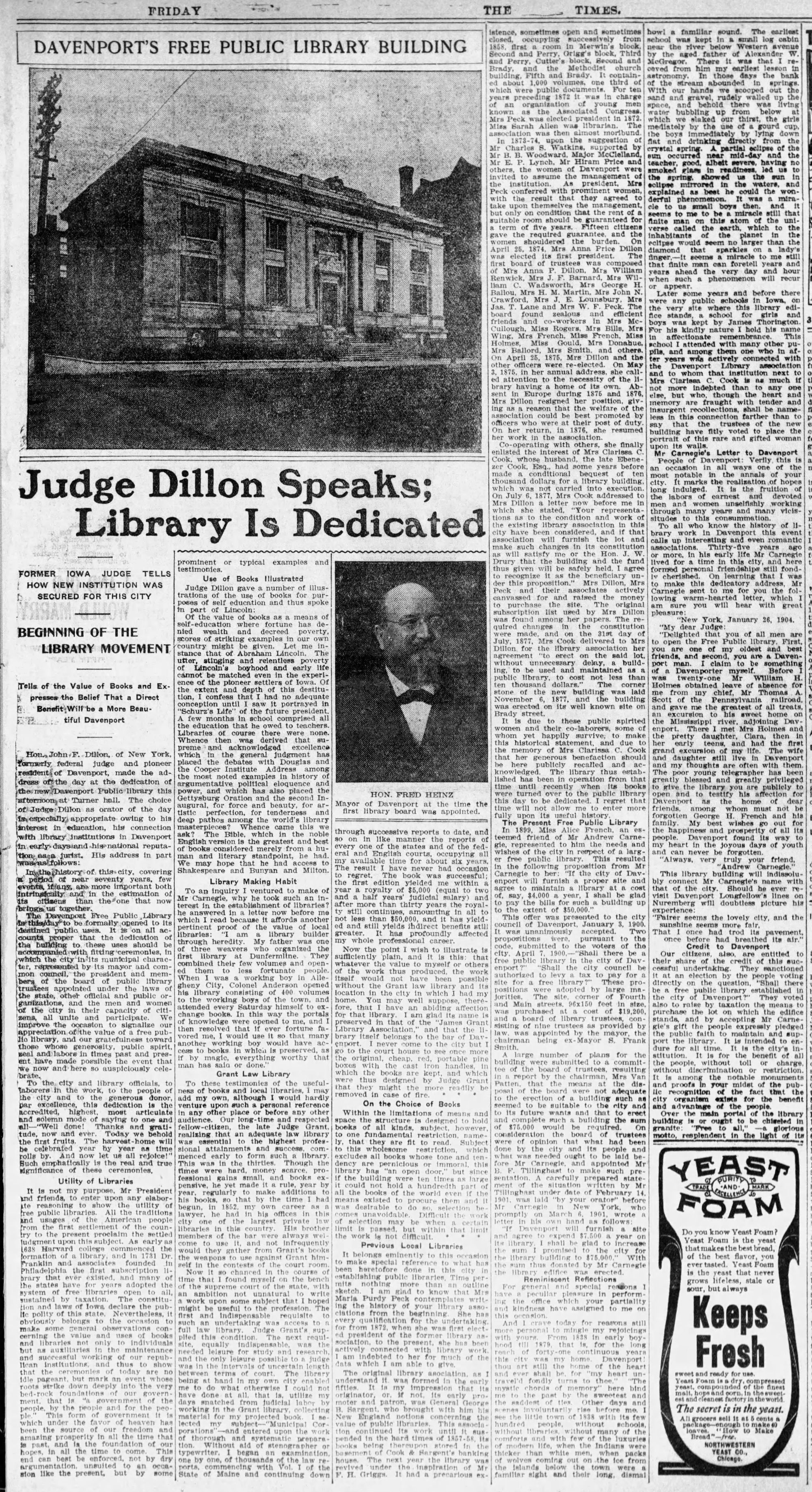
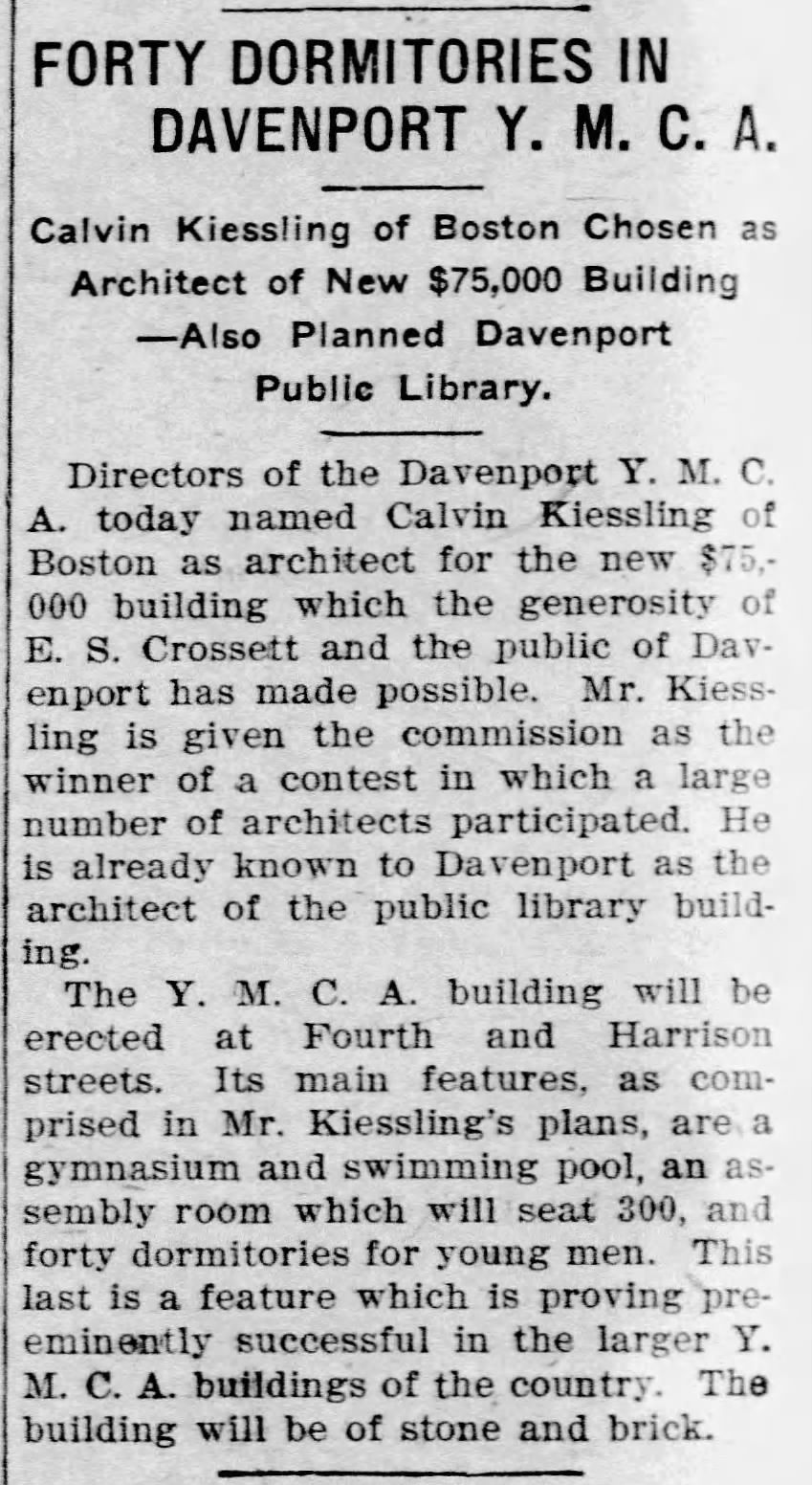

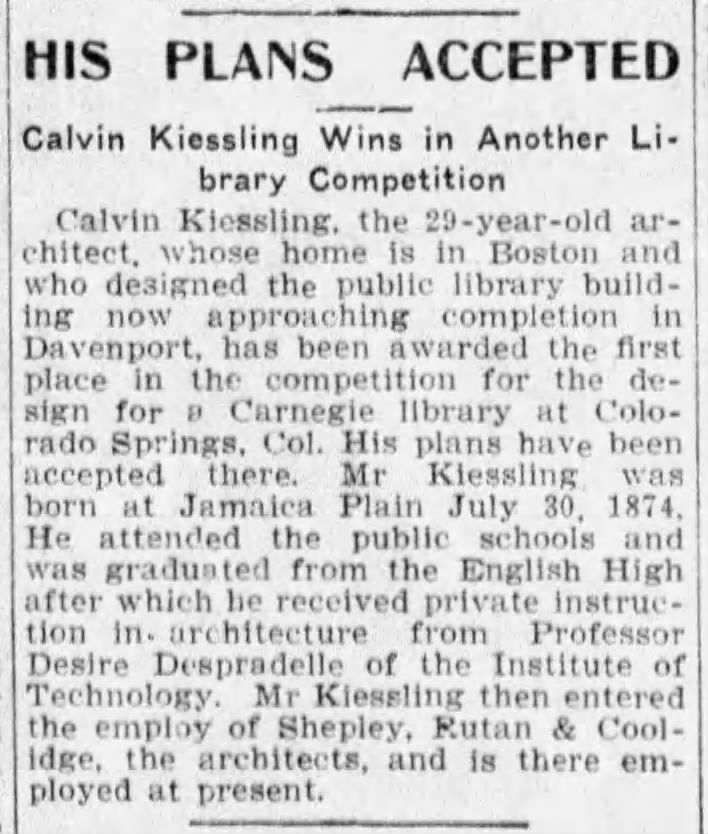
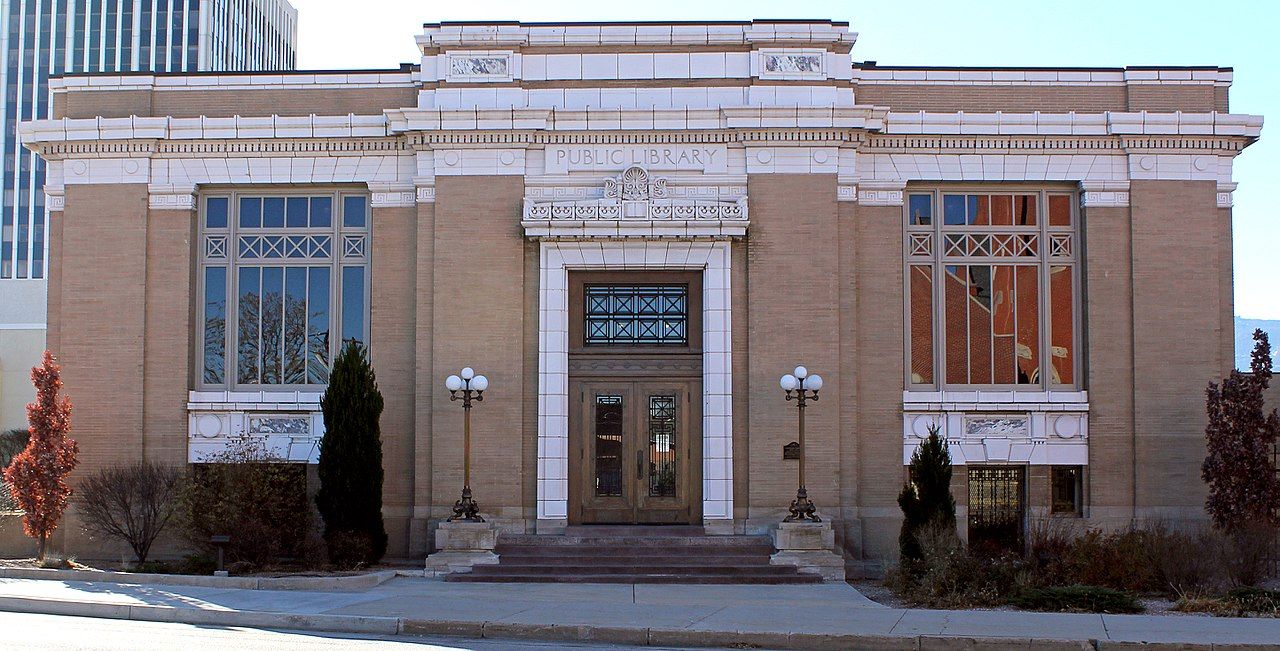
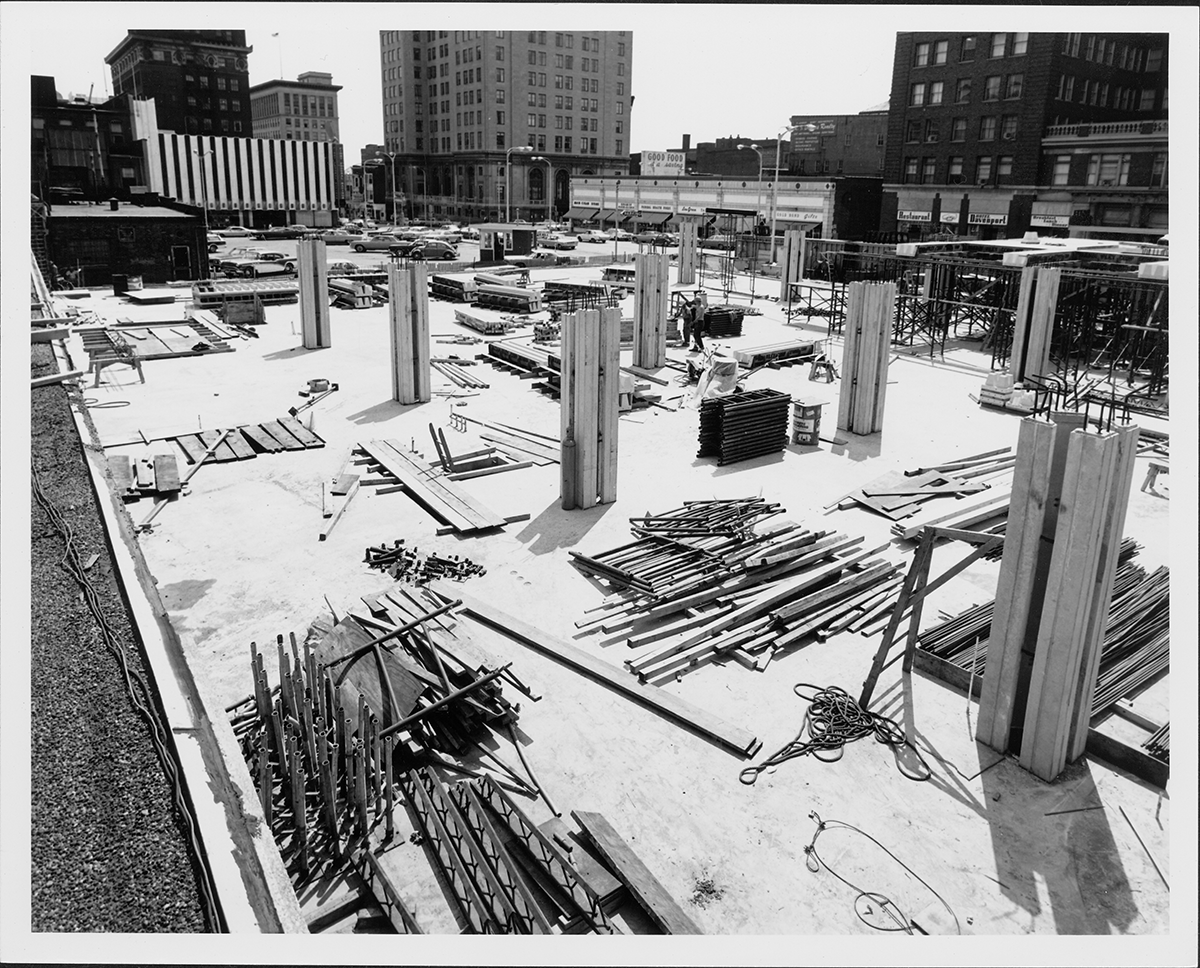
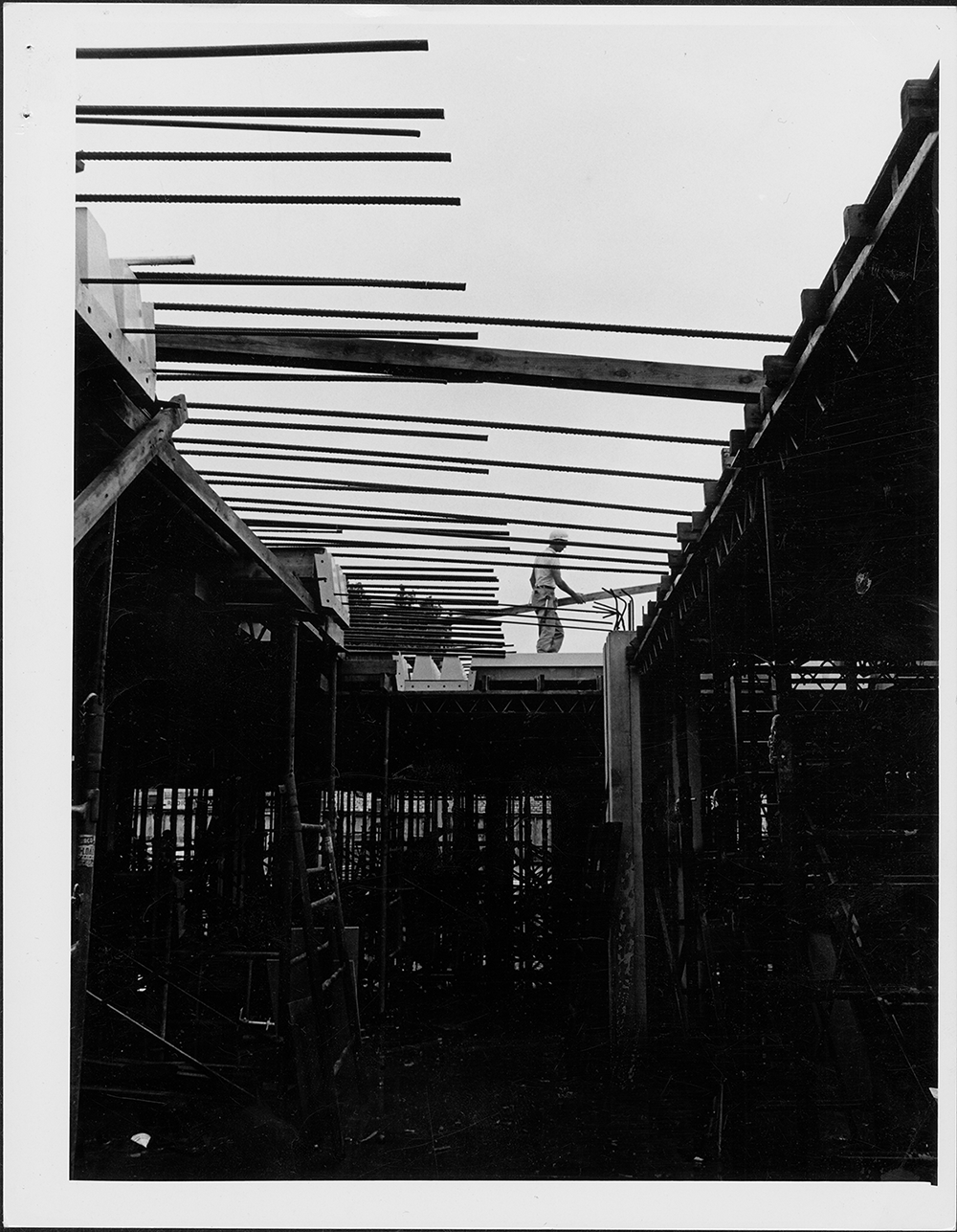
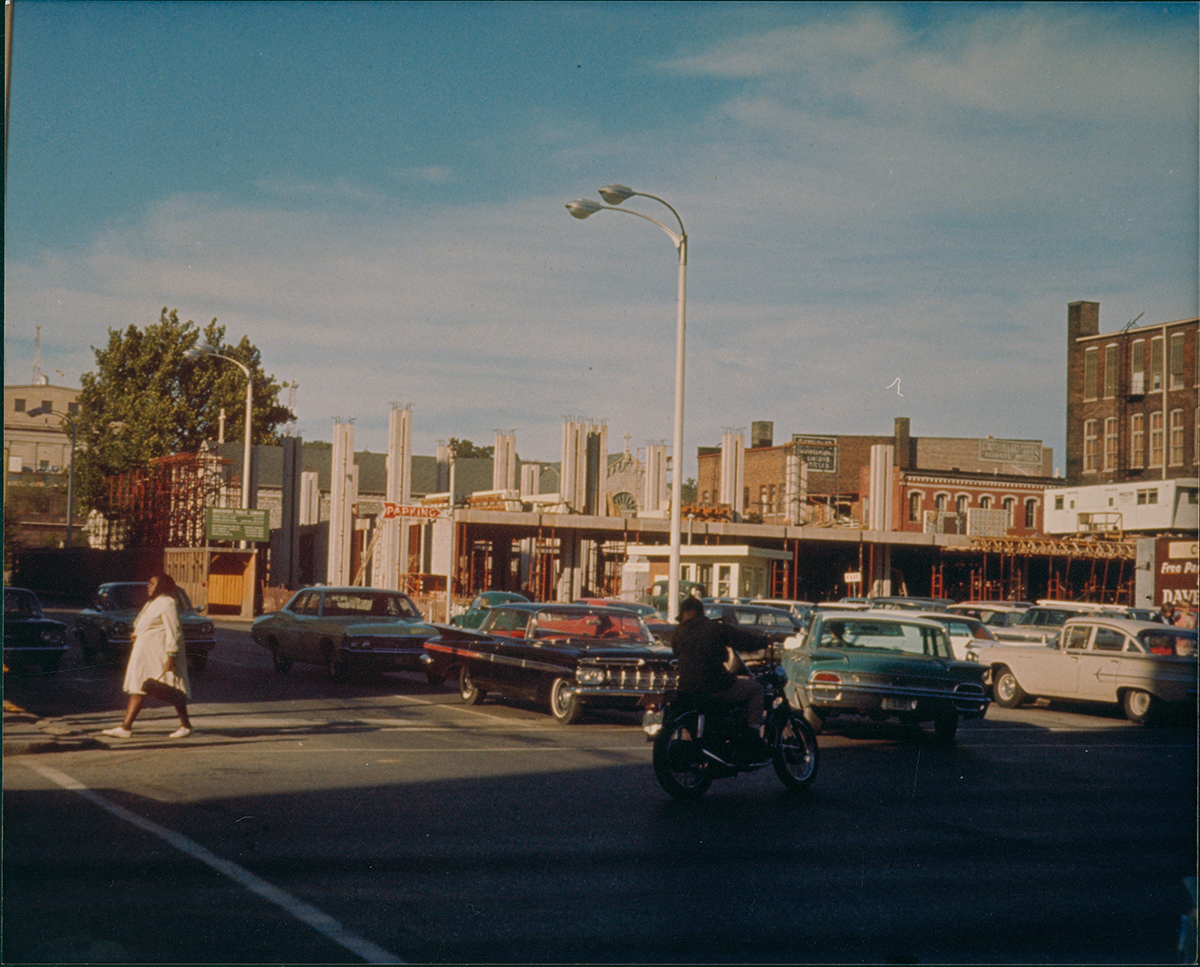
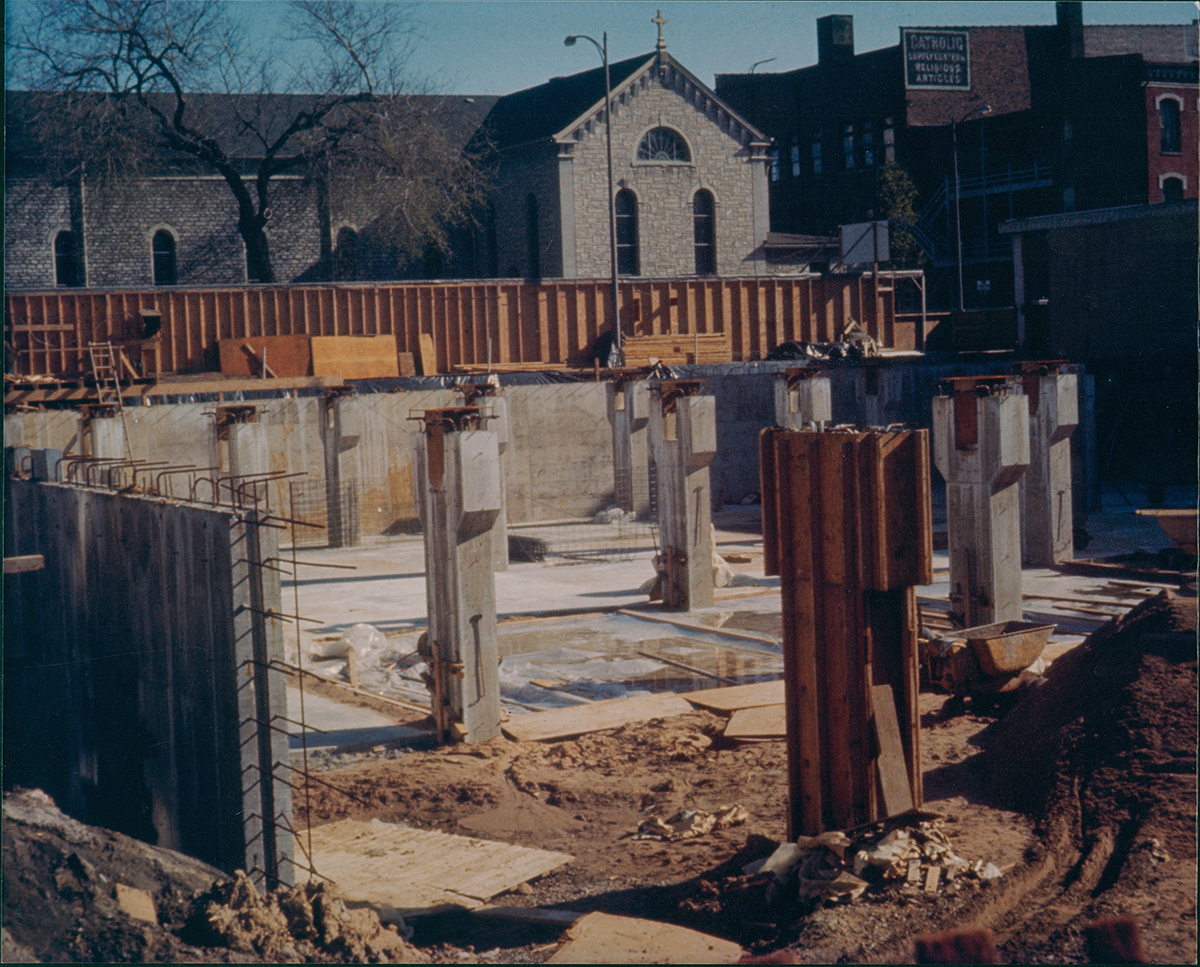

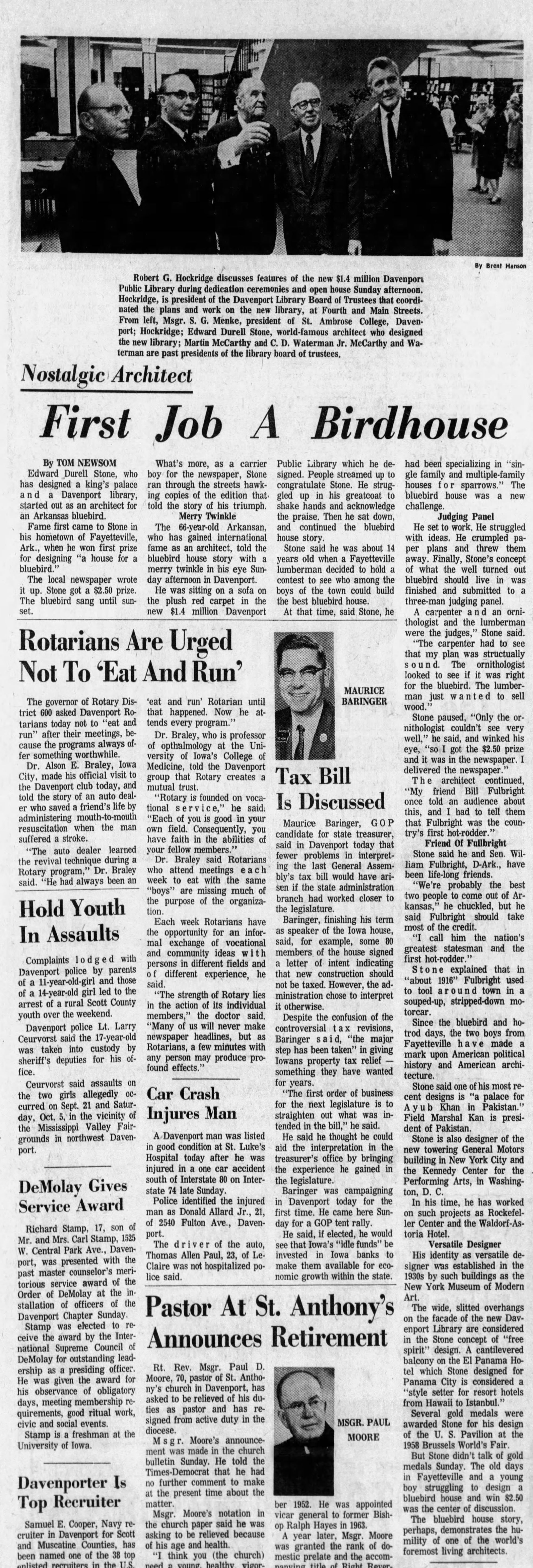
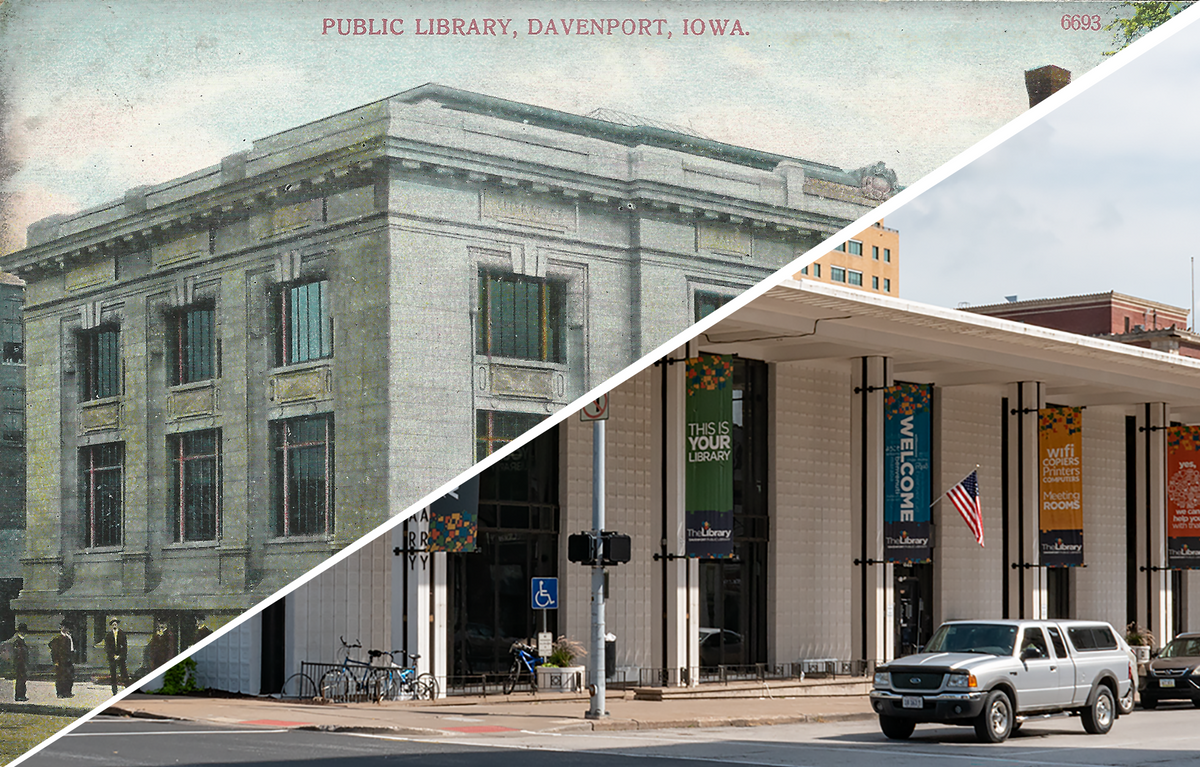
Member discussion: